I happened to own a Yashica T4 and I have a very strange relationship with it. I am well aware of its cult status. I know that its Zeiss lens should be really good and especially for a compact camera. I see gazillions of positive reviews of it. But every time I am going through another roll from it I am finding myself thinking: “So this is it? Is it really that different from any other camera?” Don’t get me wrong, the results are not bad. But they don’t blow my mind either.
So I just can’t help thinking that maybe it actually makes more sense to sell my Yashica T4 and put this money into something else. And I probably would do so already (especially taking into account the price it is going for now) but… Yes, there is always a “but”. Somehow, all the time there is one shot on the roll which I REALLY like. This one shot changes everything and brings another thought: “Well damn, I see what all the hype is about”. And just like that my Yashica becomes a keeper again.
I was going back and forth like this for quite some time and decided that the only way to solve my issue is to compare my Yashica T4 to some other – and preferably cheap – point-and-shoot camera. If there is no real difference, T4 goes for sale. There are plenty of reviews and comparisons available online but they didn’t satisfy me. What I wanted to have is the purest head-to-head comparison ever:
- Yashica T4 vs. a budget compact with a matching functionality
- Same film stock preferable from the same batch
- Shots of the same scenes taken with both cameras at the same time with the same settings
- Developed and scanned by the same lab using the same equipment and settings
Making the comparison
Since there was no such comparison available, I decided to make one myself and that’s what you are reading about now. The most important thing was to select a budget contestant to go against the Yashica. In a local thrift shop, I’ve found an Olympus AF-10 Super (also known in the U.S. as Olympus Infinity Jr.) which cost me basically nothing and was fitting my experiment nicely. It is a budget compact produced by Olympus at the beginning of the 90s. It has a 35mm f/3.5 lens. It is widely available and cheap (about 15 times cheaper than Yashica T4 if you buy from eBay or you can also find them for peanuts in charity shops, flea markets etc.). I’ve bought a fresh 3-roll package of Kodak Gold 200 and took these two cameras for a walk in Berlin and Potsdam. The rolls then travelled quite a bit and were developed and scanned in Sreda Photo Lab in Moscow.
Technical specifications
Let’s start from a bit of technical geekery. Here is how Yashica T4 and Olympus AF-10 Super compare:
Lens
Yashica T4: Carl Zeiss Tessar T* 35mm f/3.5, 4 elements in 3 groups
Olympus AF-10 Super: Olympus lens 35mm f/3.5, 3 elements in 3 groups
One important difference is that the lens of Olympus stays inside of the body while Yashica’s lens protrudes when it’s ON and retracts back when it is OFF.
Focusing
Yashica T4: Infrared AF, 0.35m (1.15 ft) – ∞
Olympus AF-10 Super: Infrared AF, 0.6m (2.1 ft) – ∞
Both cameras have Infrared AF so focusing in low light conditions shouldn’t be a problem.
A smaller minimal focusing distance of the Yashica is definitely an advantage
Shutter speeds
Yashica T4: range 1/700 sec. – 1 sec.
Olympus AF-10 Super: 1/400 sec. – 1/45 sec.
T4 has a sufficiently wider shutter speed range. However, the limitation of the slow shutter speed of the Olympus can be a plus in some situations (See my notes on the low light shooting below)
Film speed range
Yashica T4: ISO 50 – 3200, Non-DX is set to ISO 100
Olympus AF-10 Super: ISO 50-1600 (actual settings: ISO 50, 100, 400, 800), Non-DX is set to 50
Again, T4 has a superior range. AF-10 features a smaller number of contacts for DX code reading. As the result, ISO 200 film will be overexposed by one stop (the camera thinks it is ISO 100) and ISO 1600 – underexposed by one stop (the camera thinks it is ISO 800) if you put it in the Olympus. It is not a big problem in case of ISO 200 as film handles the overexposure well. On the other hand, using ISO 1600 film will be trickier as it might result in the loss of shadow details.
Flash
Yashica T4: 5 modes: Auto, Red-eye reduction, Flash-IN, Flash-OFF, Landscape, Switching between modes using a button
Olympus AF-10 Super: 3 modes: Auto, Off, Fill-In flash, Switching between modes using a physical switch
The physical switch of the Olympus is probably its biggest advantage (See the next section for more details)
Size
Yashica T4: 118 x 64.5 x 39.5 mm (4.6” x 2.5” x 1.6”)
Olympus AF-10 Super: 116.5 x 63 x 46 mm (4.6” x 2.5” x 1.8”)
Olympus is definitely “fattier” but the difference is not critical
Weight
Yashica T4: 190 g (6.7 oz)
Olympus AF-10 Super: 210 g (7.4 oz)
The difference is not noticeable
Batteries
Yashica T4: 1x CR123A
Olympus AF-10 Super: 2xAAA or 1xCR123A
Another nice feature of the Olympus. AAA batteries are available everywhere and are cheap. Finding a CR123 A battery can be tricky especially if your old one will die while you’re travelling.
Other functions
Yashica T4: Has a screen and the mid-roll rewind function
Olympus AF-10 Super: Doesn’t have a screen and the mid-roll rewind function
If you’re one of five people in the world who really needs these, I am sorry, but the Olympus doesn’t fit you.
As you can see, even though these two cameras were in different price ranges, functions-wise they are pretty close. Yashica T4 is, of course, more advanced but the difference is not huge. The Olympus has something nice up its sleeve as well.
Operation
Design and build quality
Originally I didn’t plan to include the design section but I know that for some people it is important. Well, design-wise Olympus AF-10 is more or less just a brick with rounded corners. I am pretty sure the design wasn’t something Olympus really thought about when making this camera and it is understandable since it is a budget model. The Yashica T4 is definitely looking more appealing. But we are not buying cameras because of their design, right? Right?..
The build quality of both cameras is good. Yashica T4 feels better, though, as the plastic of Olympus AF-10 Super feels a bit cheap. And it probably is cheap. But the overall construction feels solid and all parts are fitted well together.
Handling
Both cameras are nice to handle and I cannot really decide which one I prefer. The Olympus has more grip due to its clam shell design and a thicker body but Yashica T4 is easy to handle and operate as well. One problem I have accounted with Olympus was that I somehow managed to stick my finger in 3 of 37 shots. I guess this is due to the fact that its lens is sunken in unlike Yashica’s lens which sticks out. So you just don’t feel when your finger might be intruding the frame. Of course now when I am aware of it, this is not a problem anymore but if you are just starting using the Olympus, you should keep it in mind.
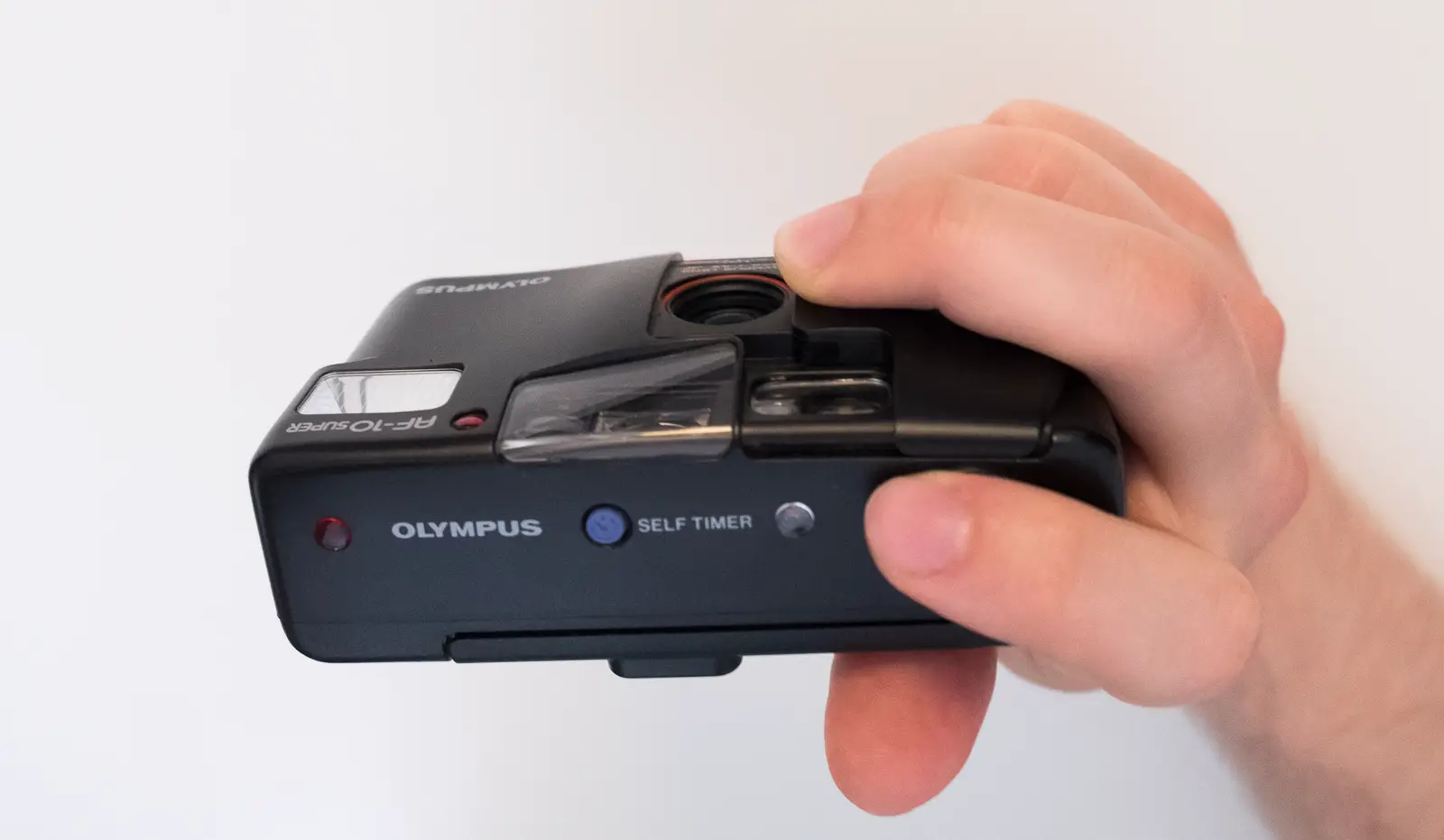
Viewfinder
The Olympus has a bigger viewfinder which is a plus. Unfortunately, it lacks the parallax correction marks which T4 has. Nevertheless, I think I prefer the viewfinder of the Olympus. I am wearing glasses so for me, the bigger viewfinder is, the better.
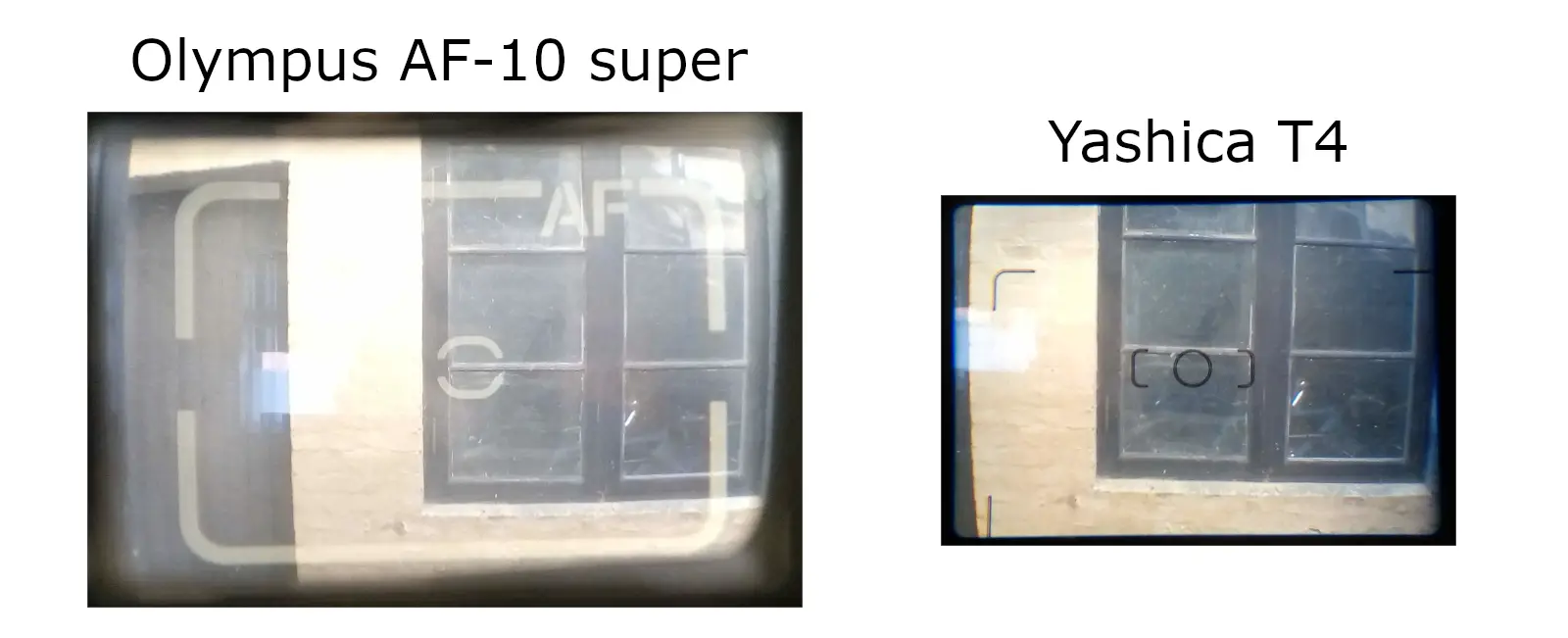
Speed
Here comes my frustration with the Yashica. It is just not fast enough. The retracting design of the lens is quite annoying. If you are willing to catch some fast-changing moment with Yashica T4, forget about it. When you are turning it on, there is a lag while the lens protrudes into the ready-to-shoot position. When you’re acquiring the focus and pressing the shutter button, there is a lag again since the camera protrudes the lens even further to get it into the focused position. These movements are quite slow as well.
Olympus AF-10 is not the fastest camera either but it has a shorter lag when you turning it on since it doesn’t need to protrude the lens. It is still not “zero lag”, though. Between pressing the shutter button and the shot itself there is a bit of a lag again as the focused position of the lens is further away and the camera needs to protrude it. Nevertheless, the movement happens faster than in case of Yashica T4.
So the overall speed of Olympus is better but if you need something for instant shooting with no lag, none of these two is for you. Instead, you should look for some less automated non-AF camera and go with the zone focusing.
Noise
Let me start from saying that if you are taking photos with any of these two cameras on the street, you can forget about the discreet shooting. Everybody will know you just took a shot. They sound different but none of them can be called silent.
The Olympus is loud all around. Each shot produces a loud “clack” and the film advance mechanism is loud as well. Fortunately, the sounds are not annoying. I would say that the shutter sounds quite classy. It sounds really similar to some other camera I used before but I cannot remember which. The sound of the film advance mechanism is less enjoyable, though.
The Yashica is more silent but, unfortunately, also more annoying. Every time you are turning the camera on, it makes a high pitch robotic sound and protrudes the lens. Every time you are turning it off, it does it again. Every time you are taking the shot, the lens moves and makes this sound again. The shutter sound is fine but that’s the lens movements which are ruining everything. The film advance is sufficiently more silent than in the Olympus.
Focusing
I would say both cameras are focusing well. From 37 shots, the Olympus missed focus twice while the Yashica did so four times. I was surprised to see better results from Oly but it might be just a small sample size.
Flash operation
That is what I love about the Olympus. By default, every time you’re turning off the camera, it puts the flash in the Auto mode. However, as it does it is using a physical switch, it is really easy to “hack” it. Here is the link to the post by 35mmc’s creator Hamish Gill himself describing how to do it – link.
The post is missing a bit of information on taking off the lens cover but it is not hard, don’t worry. Just stick a small screwdriver under it near one of the “rails”, pull the screwdriver up and the cover will pop off. It might feel like you can break it but in fact, it is pretty solid. Just be sure not to lose a little bearing ball which is located under the cover.
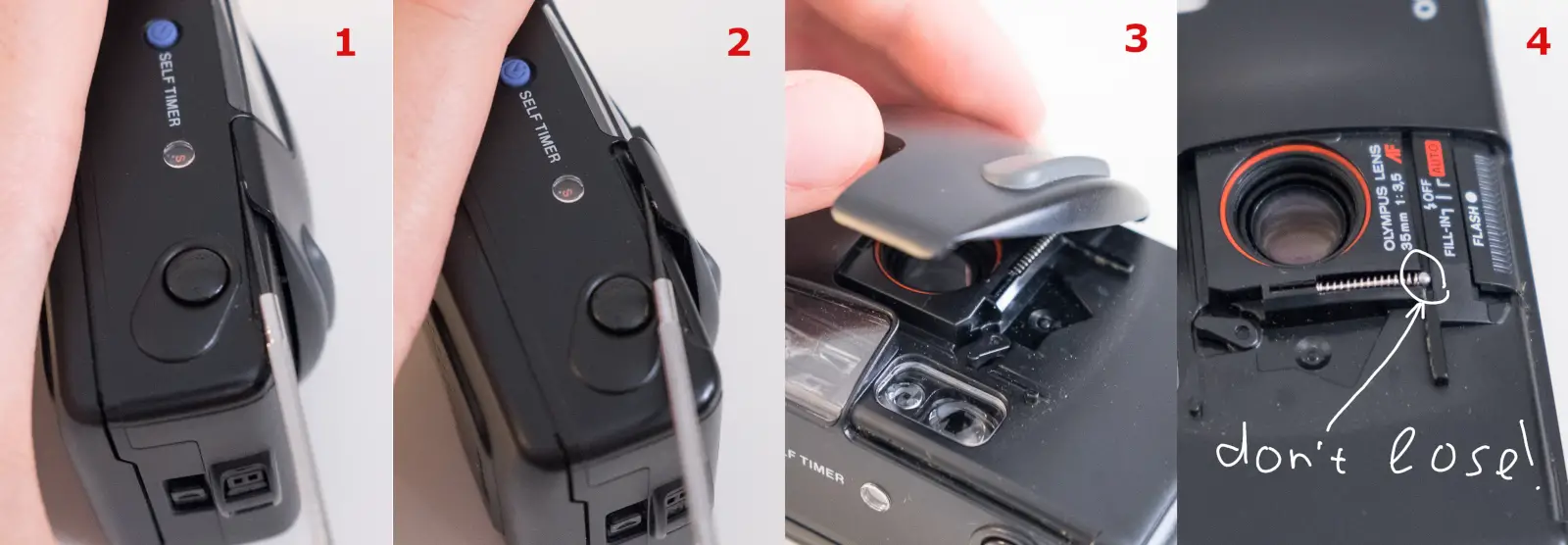
Remove a little plastic tab pointed by the instructions above using a knife (paper or a hobby knife makes it easier) and, voila, the flash will stay in the mode you want it to stay. Which is, of course, Flash-off.
You cannot hack Yashica T4 like that. With it, each time you are turning the camera on the flash will be in the Auto mode. To turn it off you need to press the flash button located on the top of the camera three times. And you do it every single time you turn the camera on. This. Is. Annoying.
Side by side results
So here comes the most interesting part. I didn’t edit any of the photos except cropping two of them: one was the last frame which didn’t fit entirely and got cut and another had my finger sticking in. Looking at the photos I am realizing that I definitely failed in the variety and creativity departments. All of these are just quick simple street snaps and don’t have much of the artistic value. I should also have probably added some close-up shots and portraits. But well, you can’t have it all. Also, this is the way I mostly use compact fully automatic cameras anyway.
To make it more interesting, I will not tell you which camera is which yet. Take a look and try to guess which of them is Olympus and which is Yashica.
#1

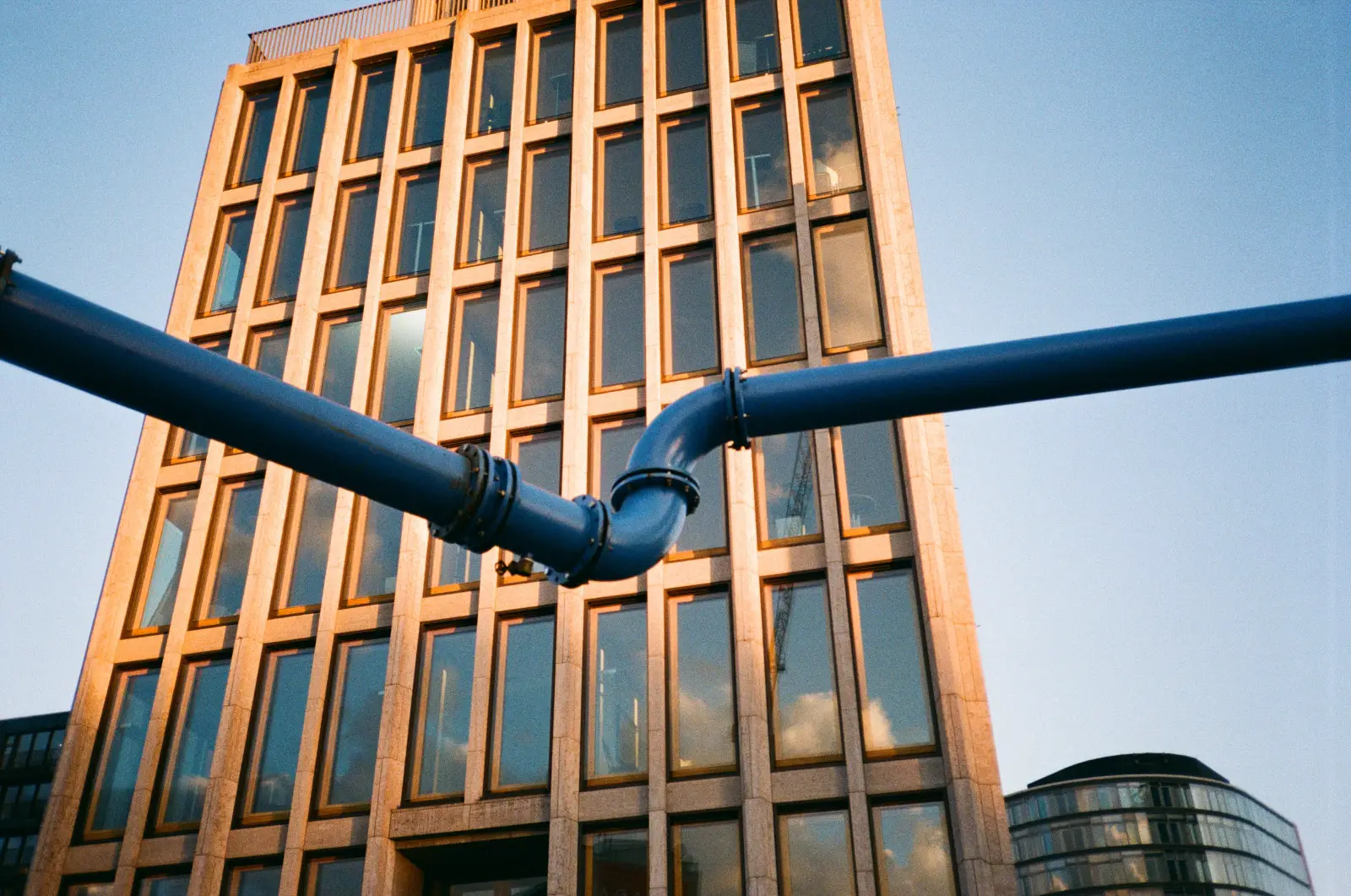
#2


#3

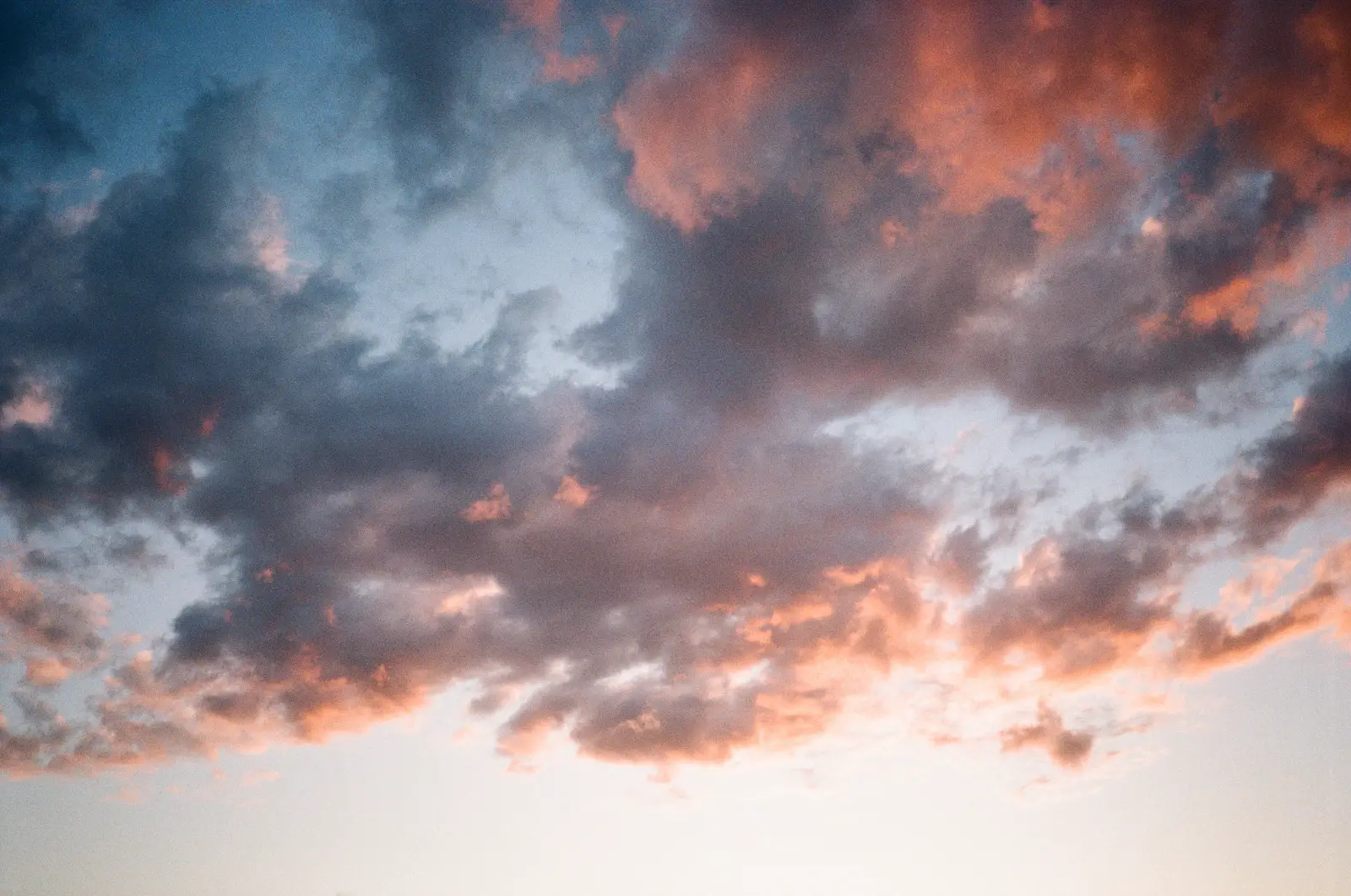
#4

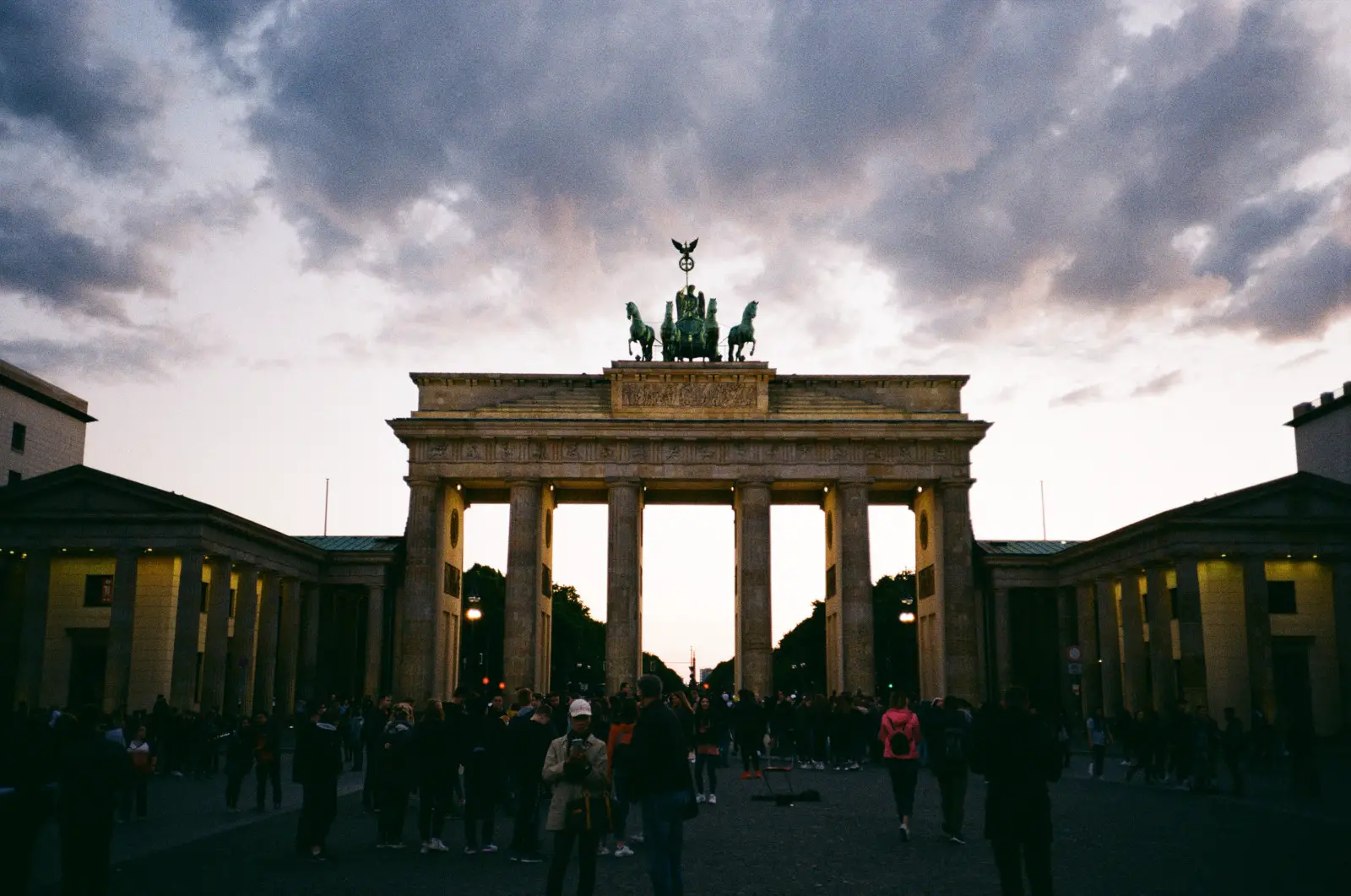
#5

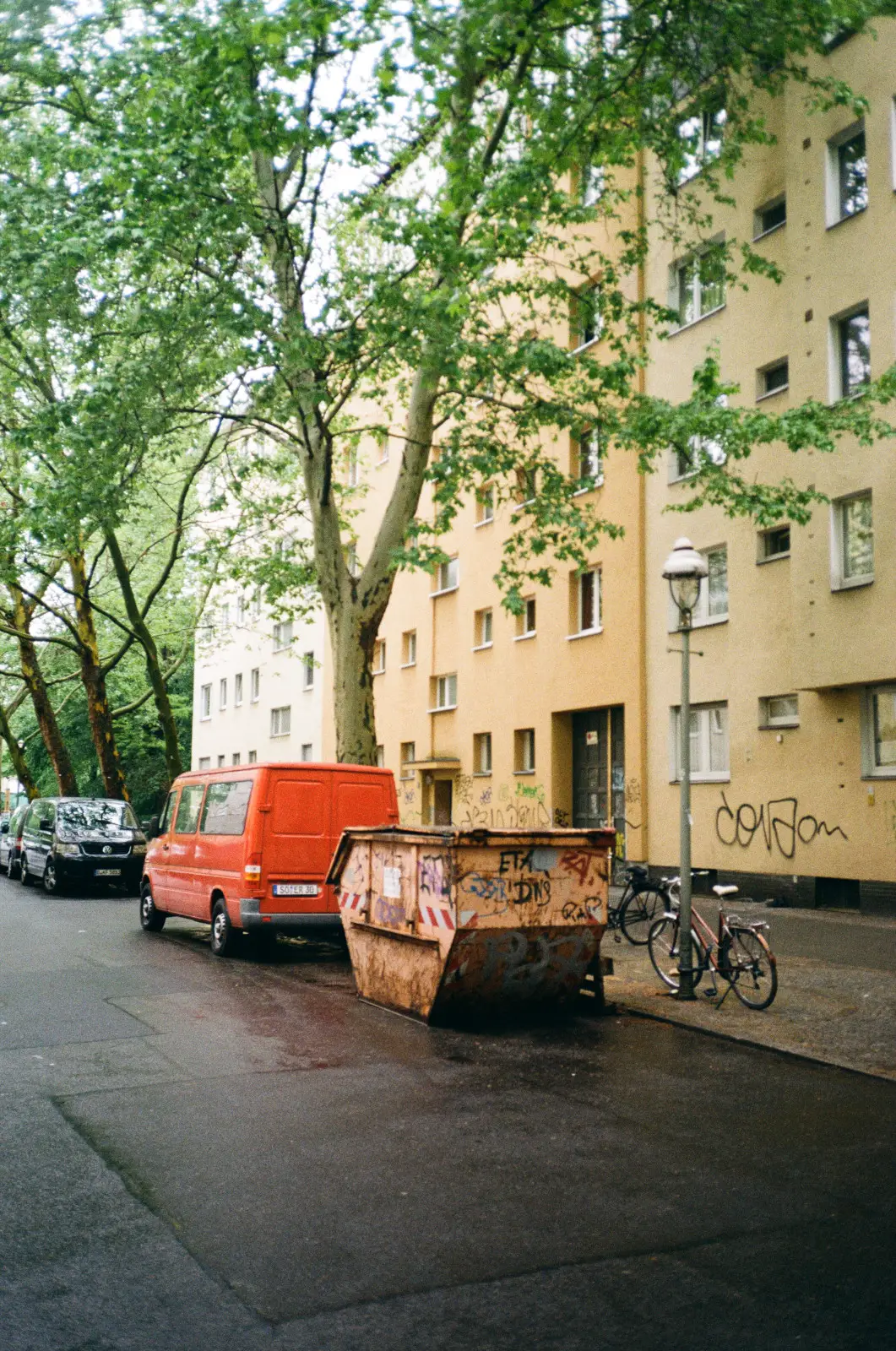
#6

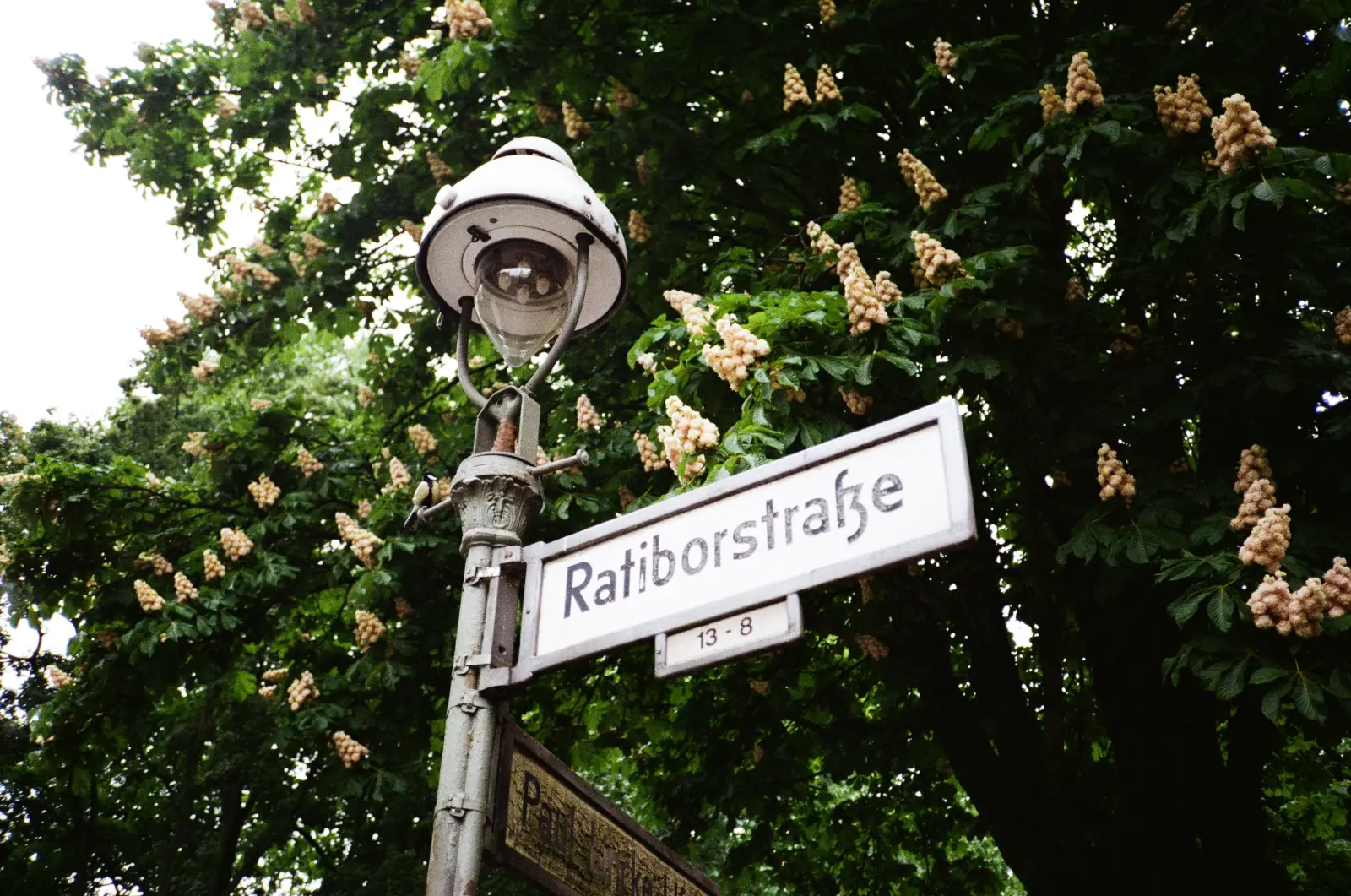
#7
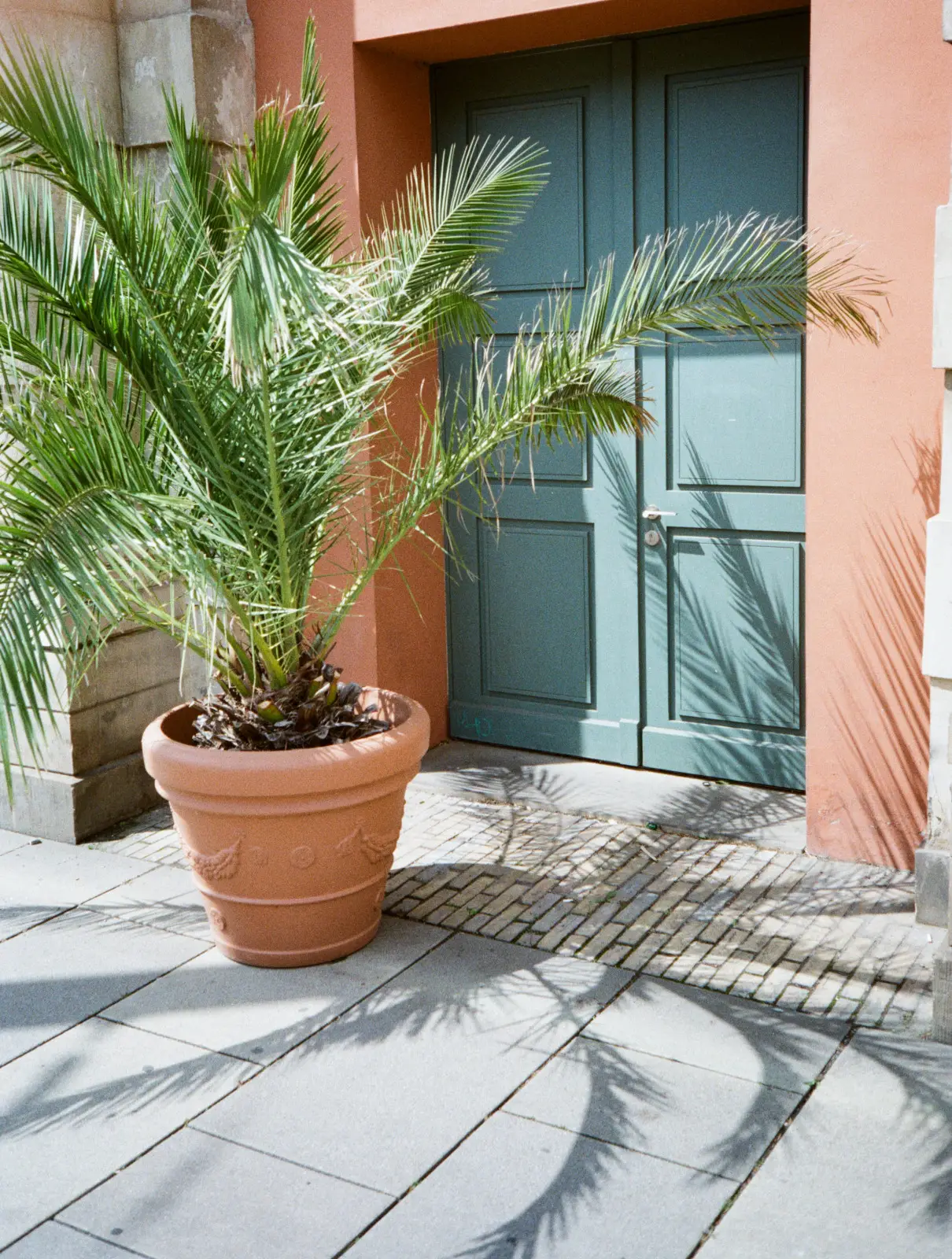
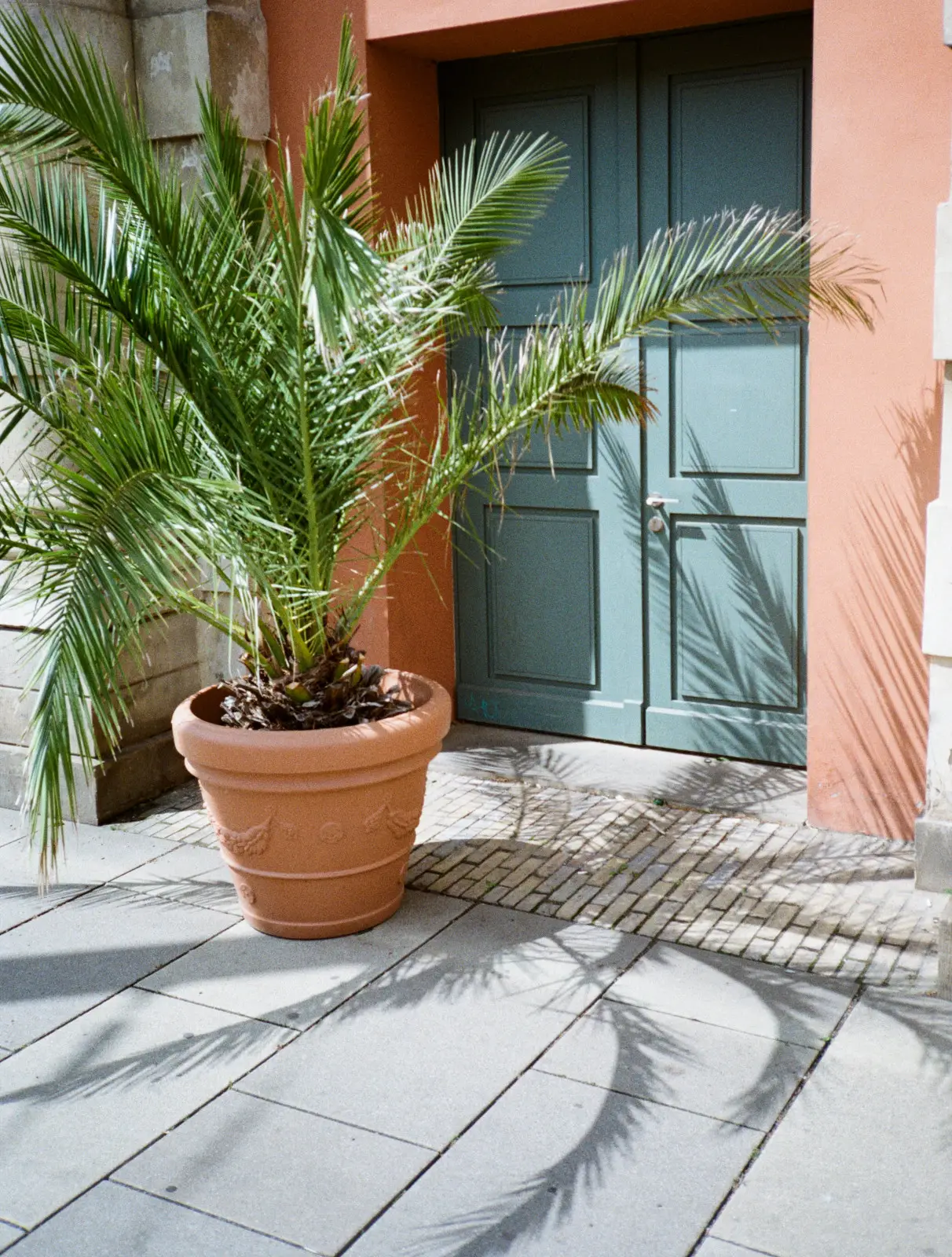
#8
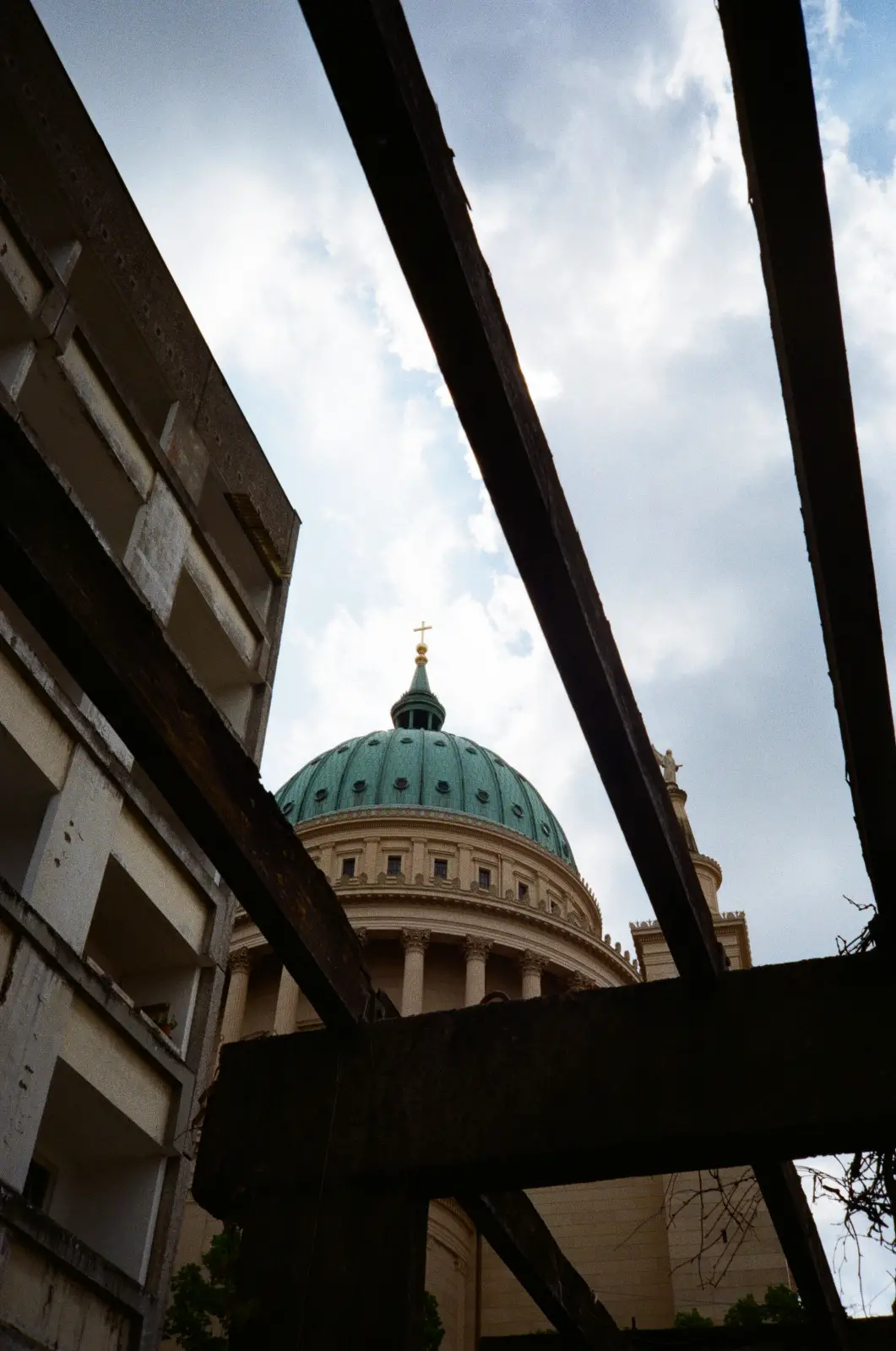
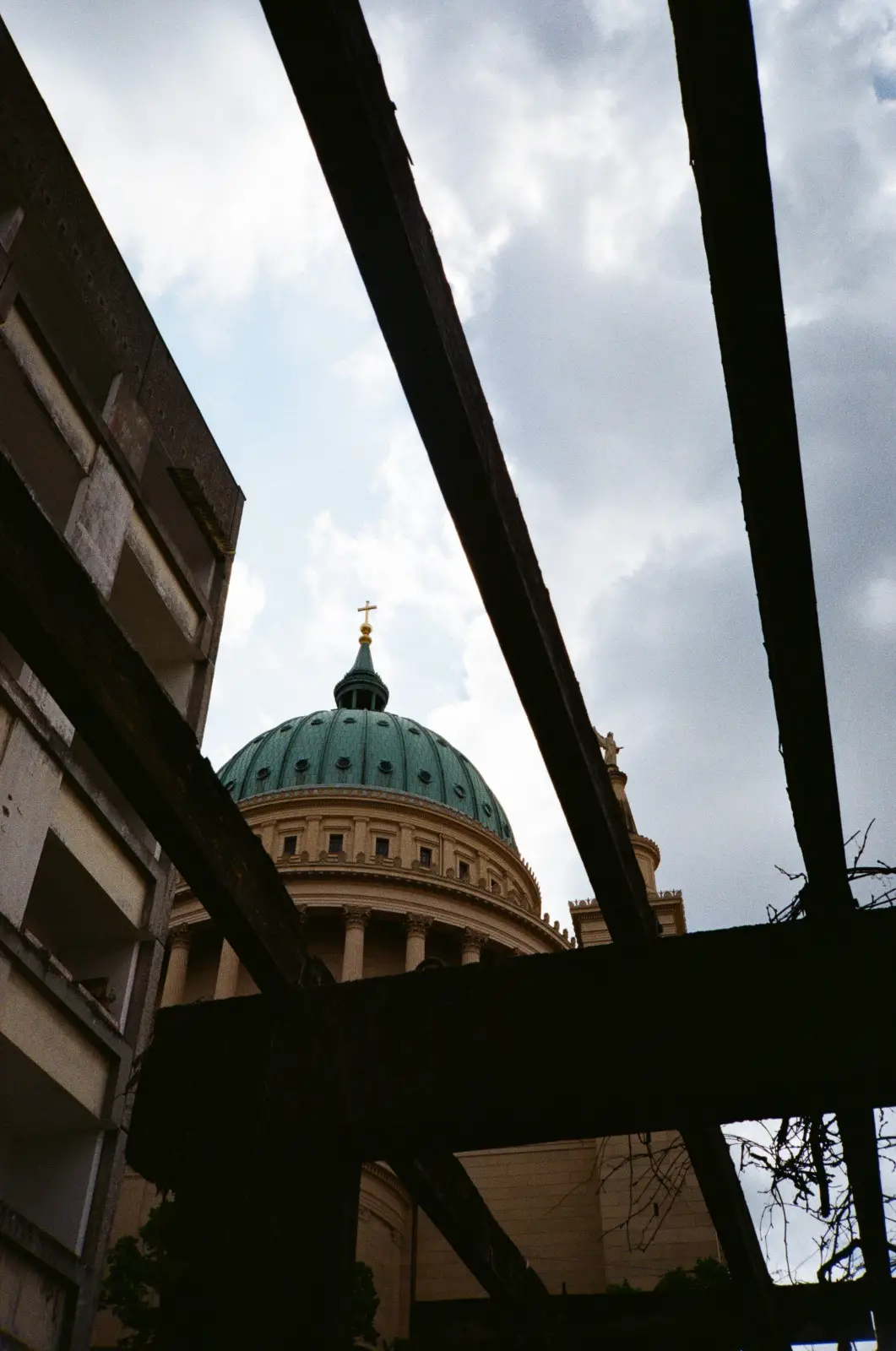
#9

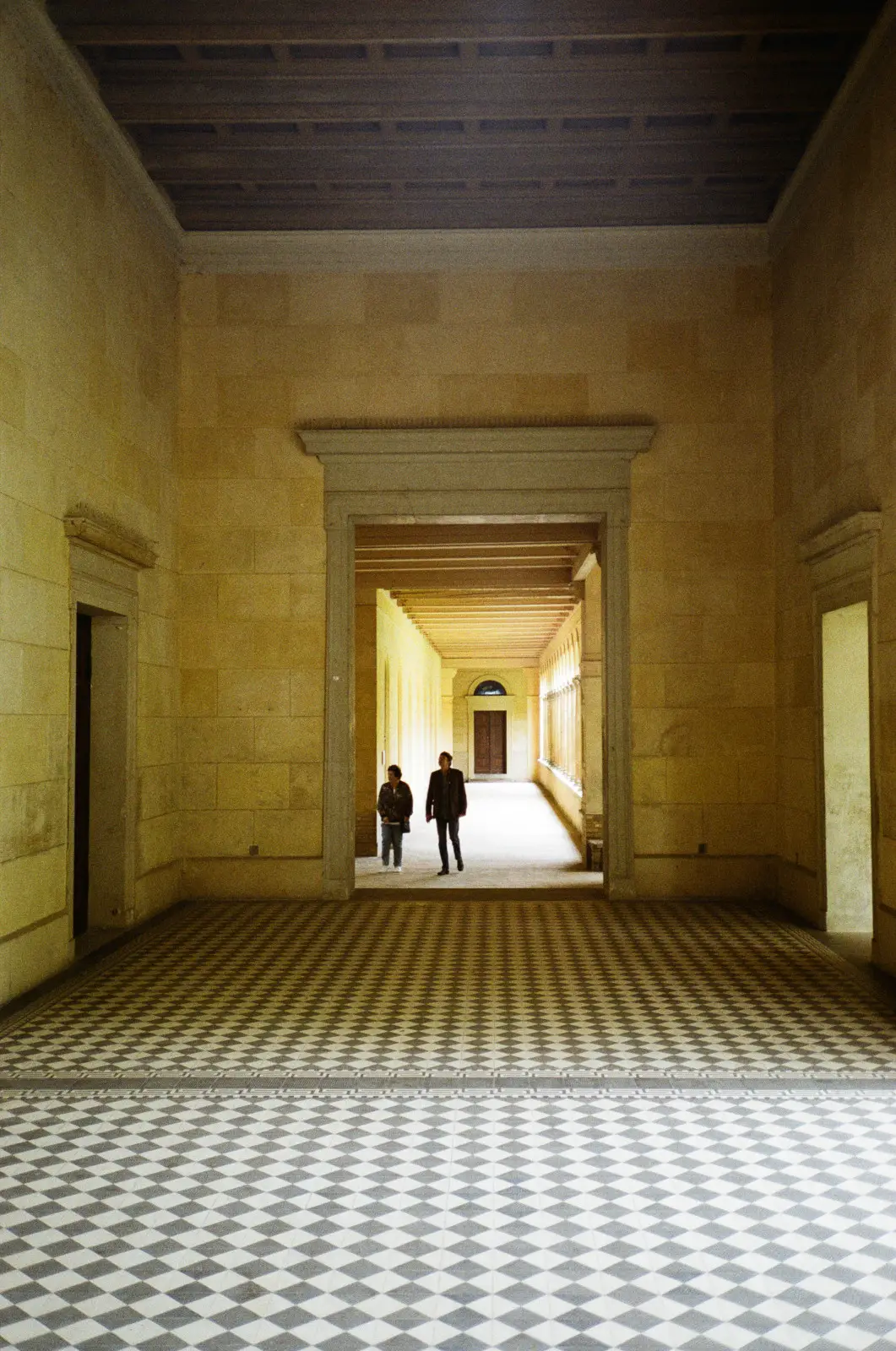
#10

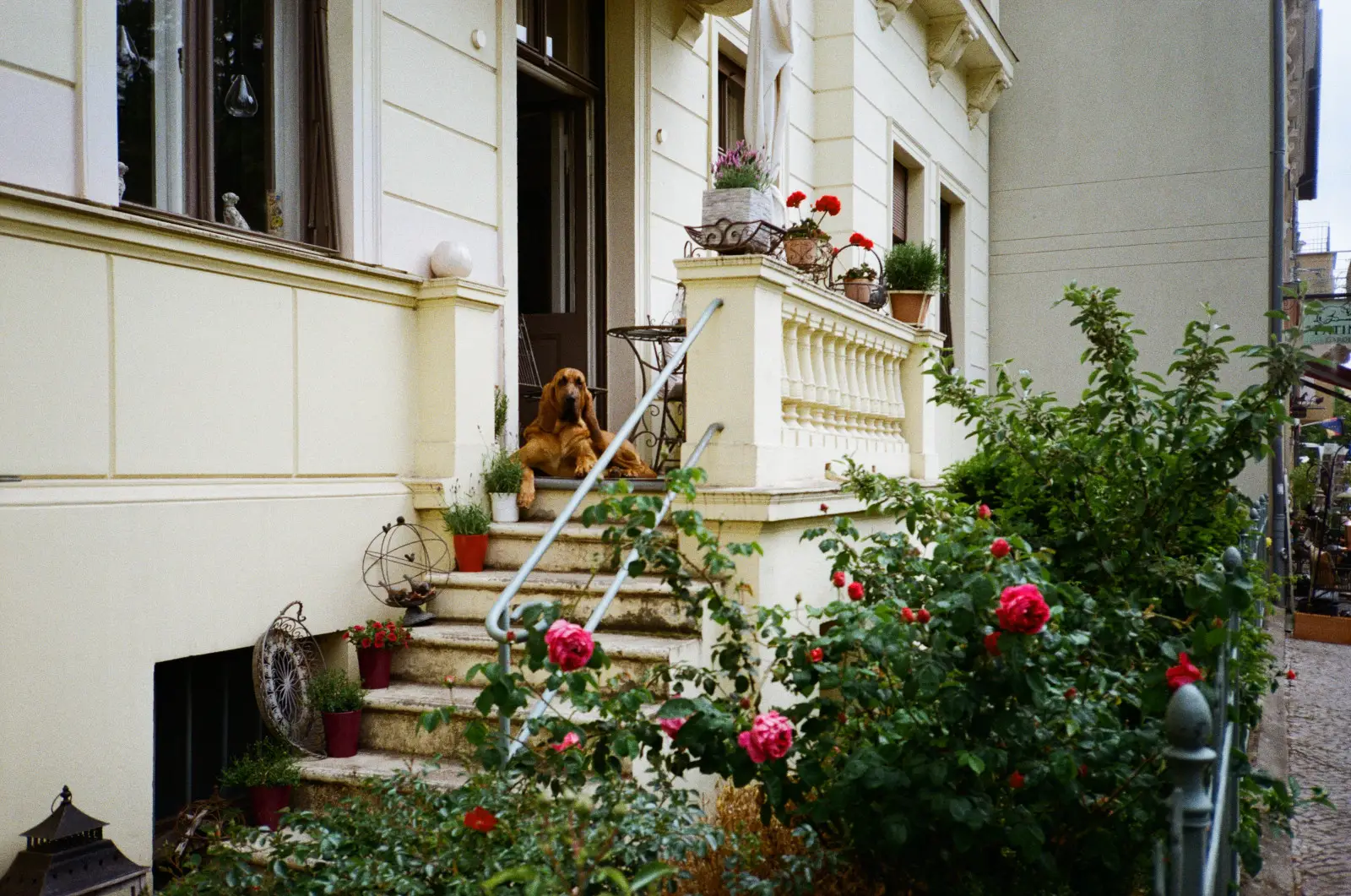
#11

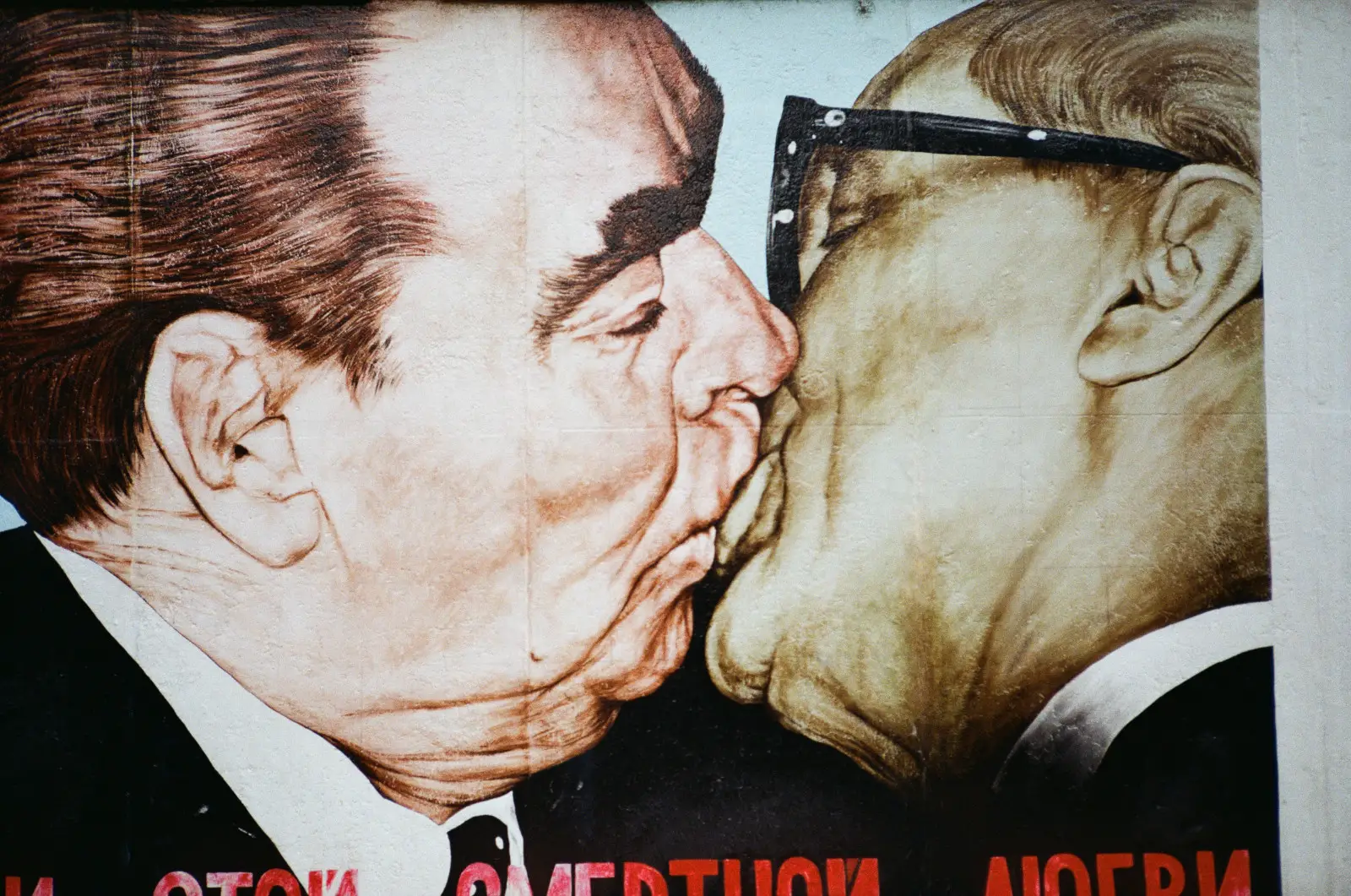
#12

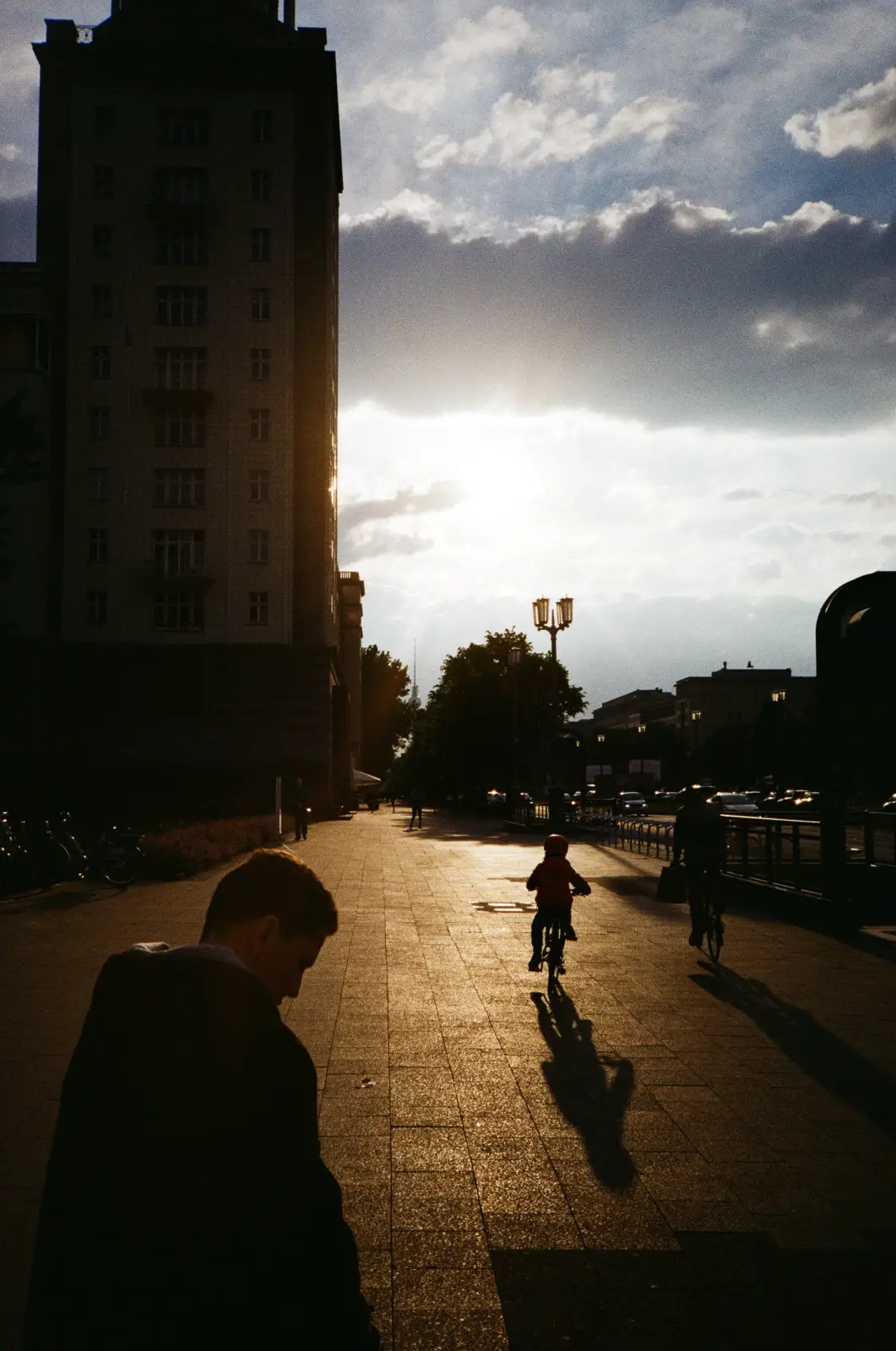
#13

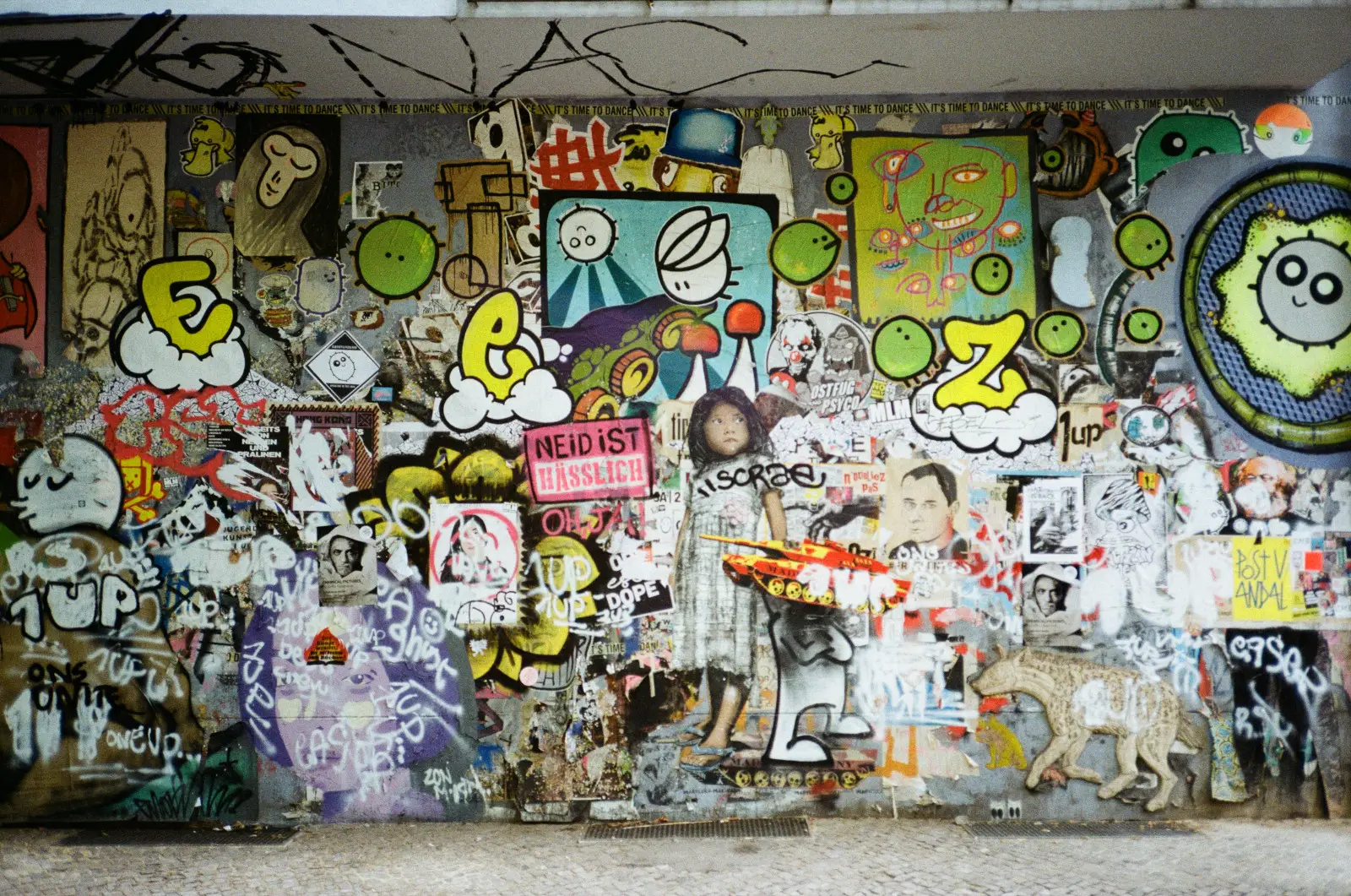
#14
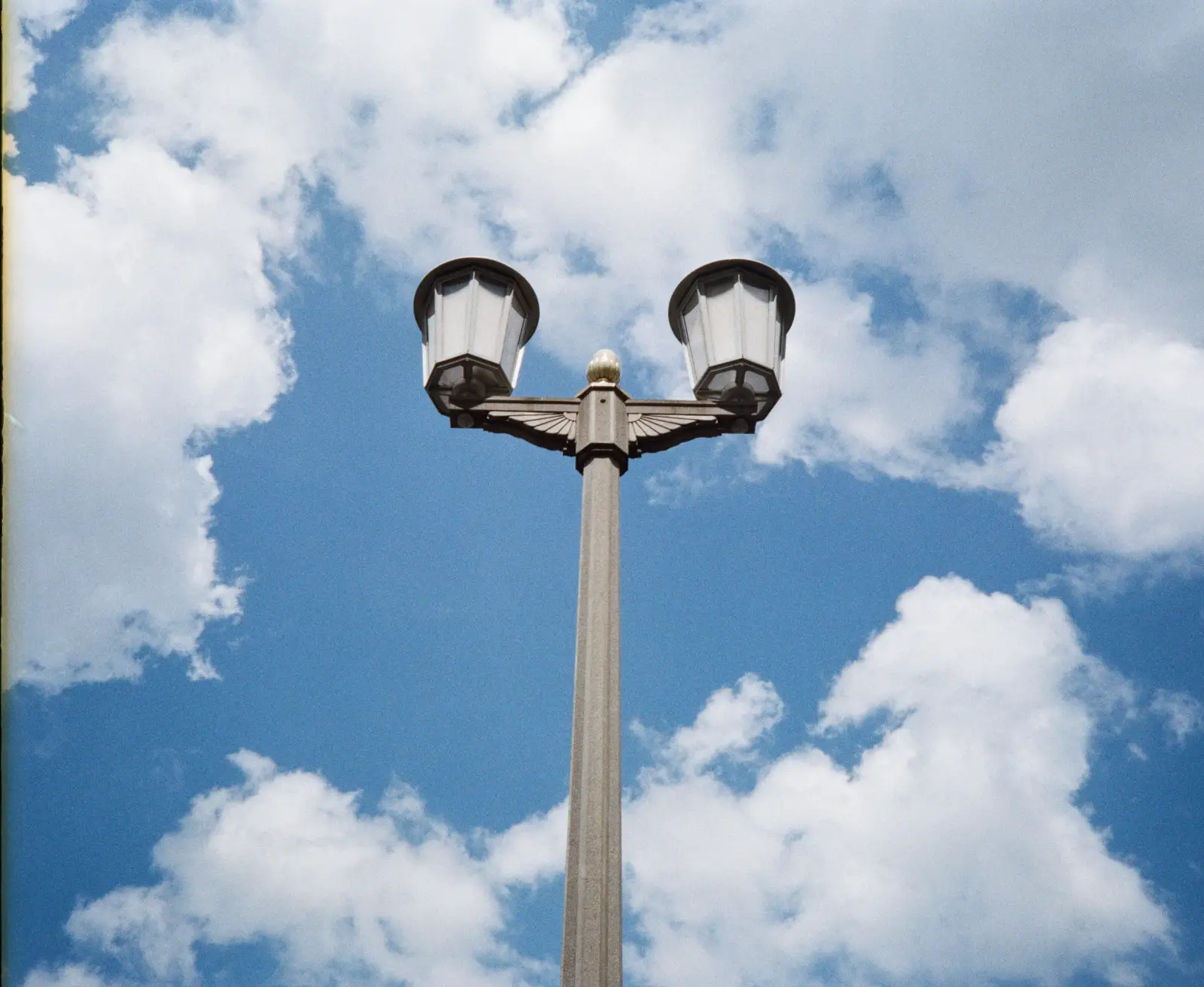
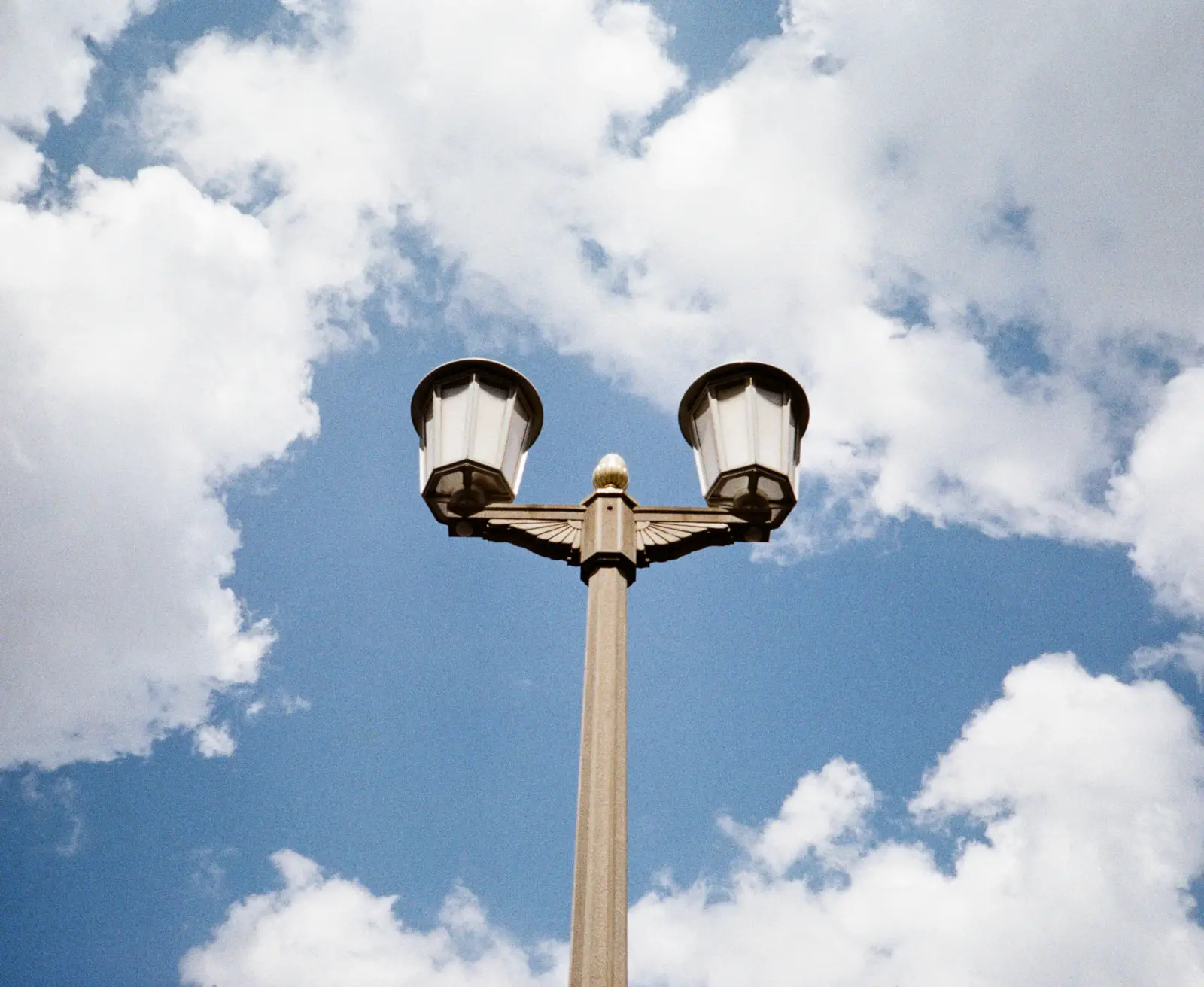
Let me guess, the first thing you have noticed is that photos on the left are generally flatter and a bit brighter. And if you were reading the technical part above, you probably even know why. After all the effort of having the purest possible comparison, I have failed. So what was my mistake? Well, as I learned already after I exposed these rolls, Olympus AF-10 Super cannot distinguish between ISO 100 and ISO 200 films and treats them both as ISO 100. I was using Kodak Gold 200 for the test. As a result, all photos from the Olympus were overexposed by one stop. And the overexposure is known to result in flatter negatives. It is not a big deal but the comparison purity I was striving for was ruined. So yes, photos on the left are from Olympus AF-10 Super.
Apart from the exposure difference, the results are very close. Both cameras are producing sharp photos. In many cases, photos from the Olympus turned out sharper than from the Yashica (e.g., photos #2 or #5) but it might also be related to the focusing or caused by a bit of a camera shake. Both cameras have some sharpness fall-off and minor vignetting in the corners and in this regard they are performing extremely similarly. The Olympus is producing a lens flare when shooting against the light while the Yashica controls it better. On the other hand, in the photo #9 the Yashica got some ghosting from the bright light coming from above while Olympus didn’t.
There is a difference in the colour reproduction between the two. To some degree, it can be caused by the difference in the exposure but I think there is more than that. Yashica T4 tends to produce warmer colours. You can see this from photos #5, #9, #11 and especially #14. However, the last shot was cut in case of the Olympus and scanned together with the frame gap and a part of the previous frame which could have influenced the white balance the scanner ended up with. Generally, I find the colours from the Yashica a bit more pleasant to my eye but the difference is dependent on the particular scene and is often negligible.
I have also taken some shots in low light situations. As I wrote in the technical comparison, the Olympus has a sufficiently narrower shutter speeds diapason and the slowest shutter speed you can get is 1/45 sec. Yashica T4, on the other hand, can go all the way to 1 second. It might be seen as a clear advantage of Yashica T4 but often it is not. Take a look at these photos (AF-10 on the left, T4 on the right):
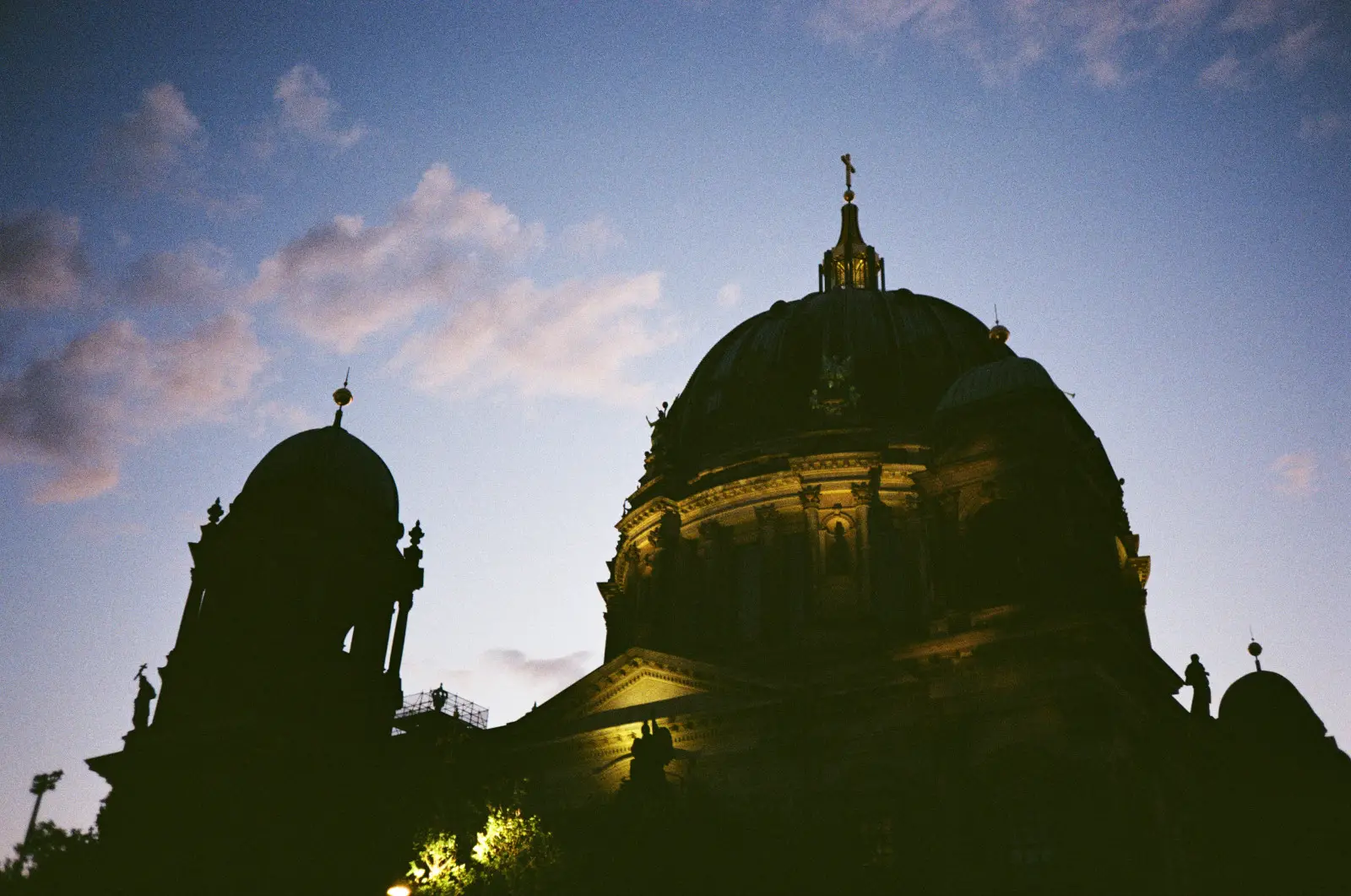
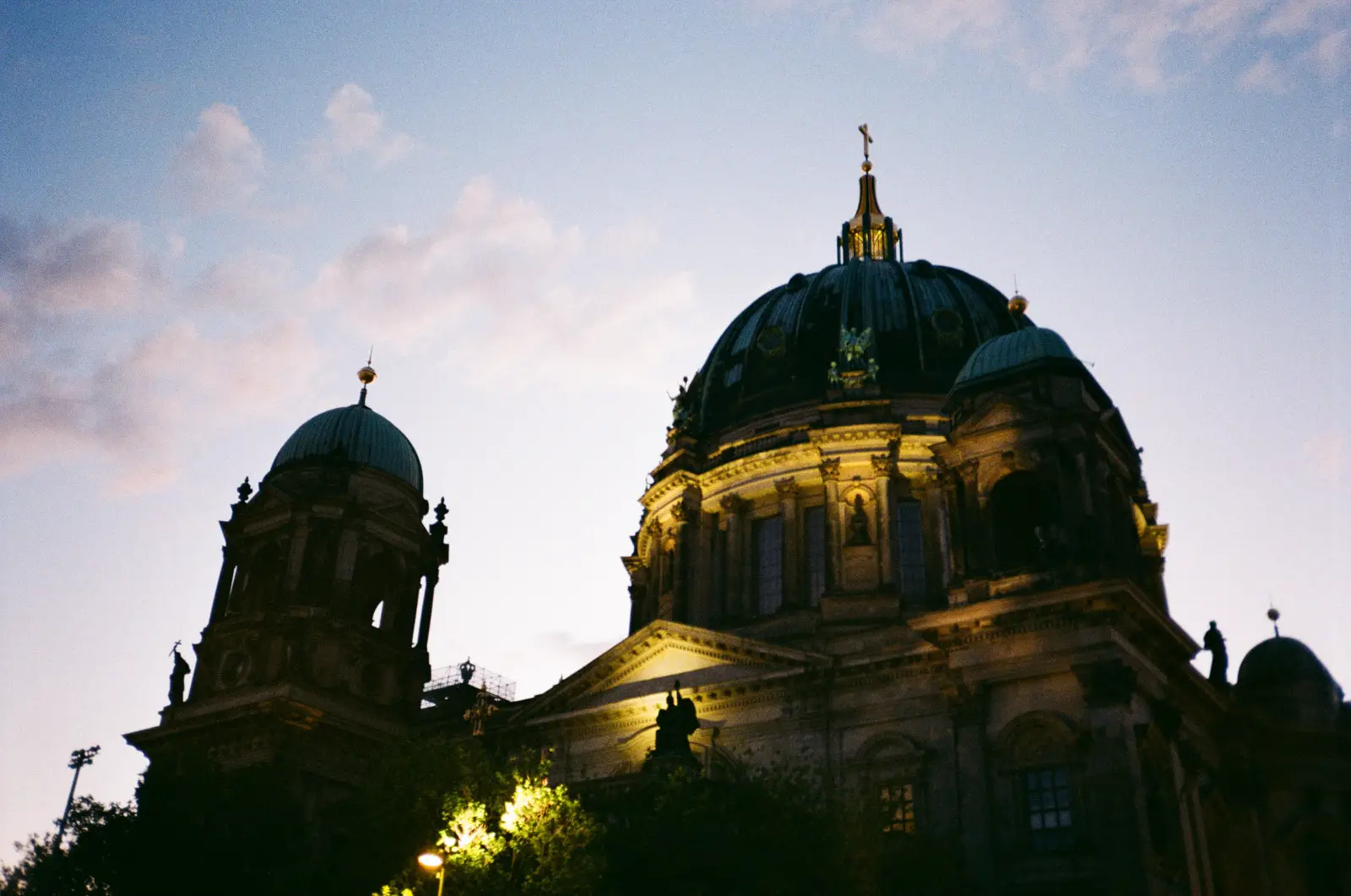
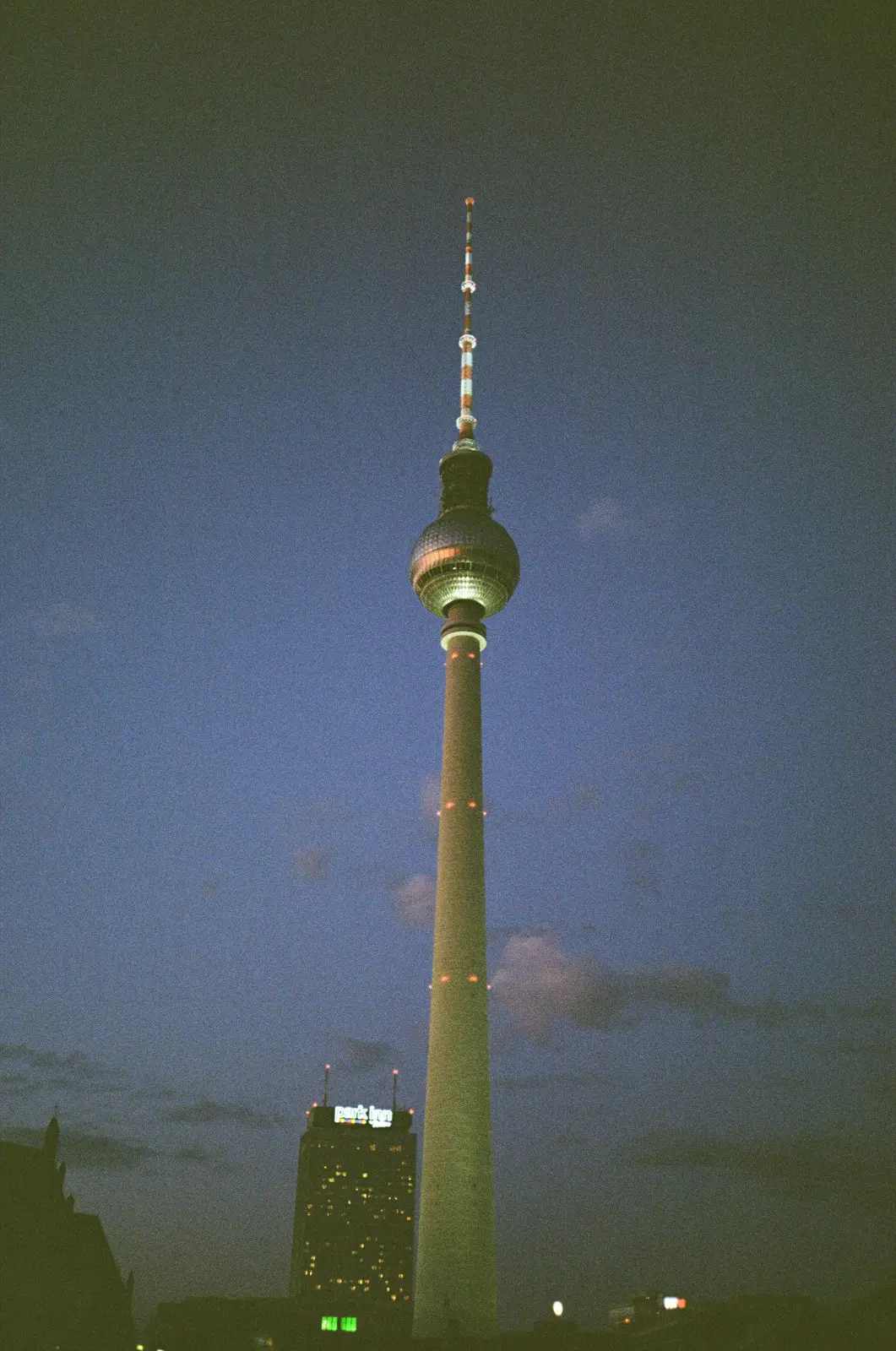
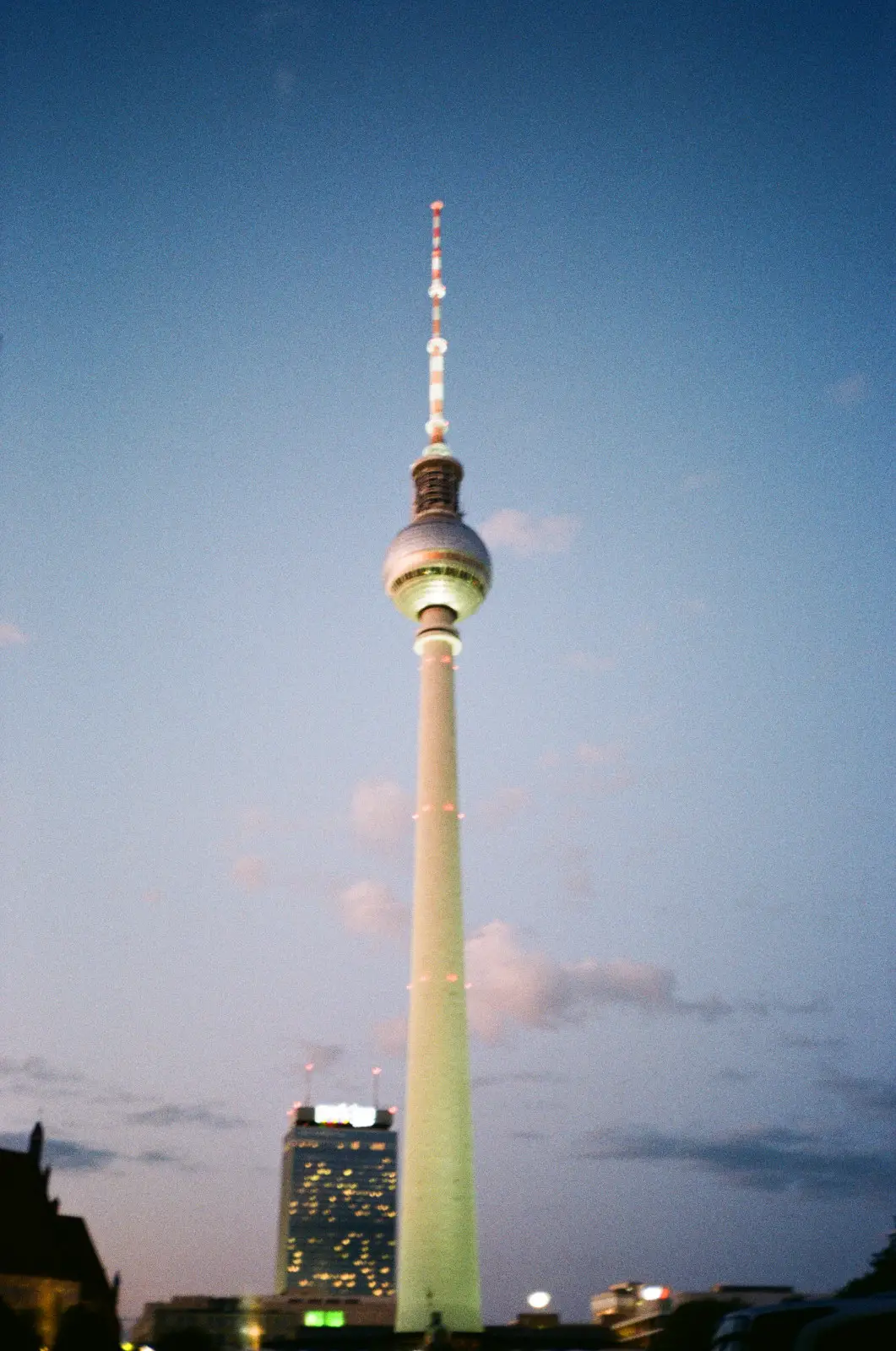
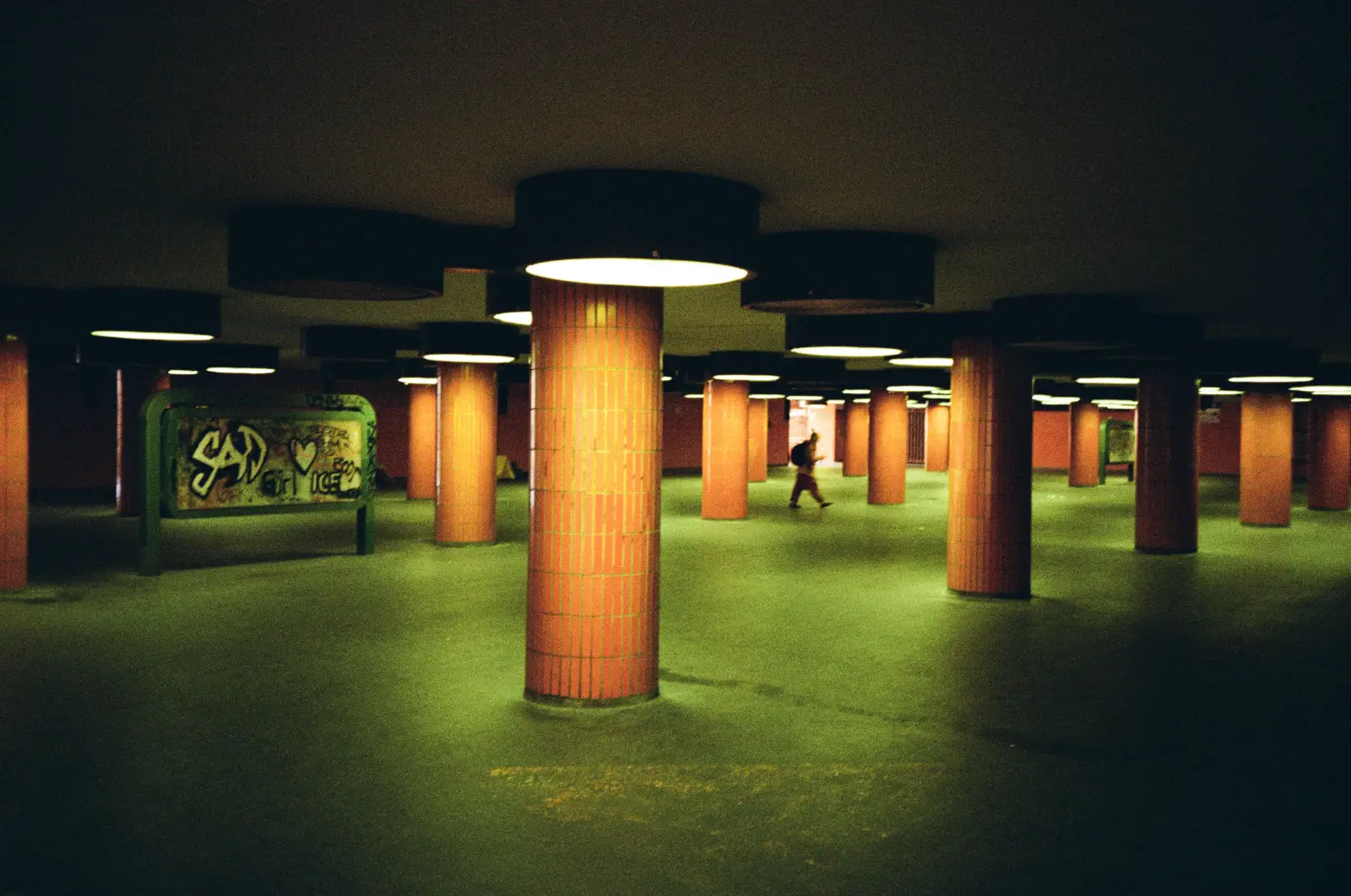
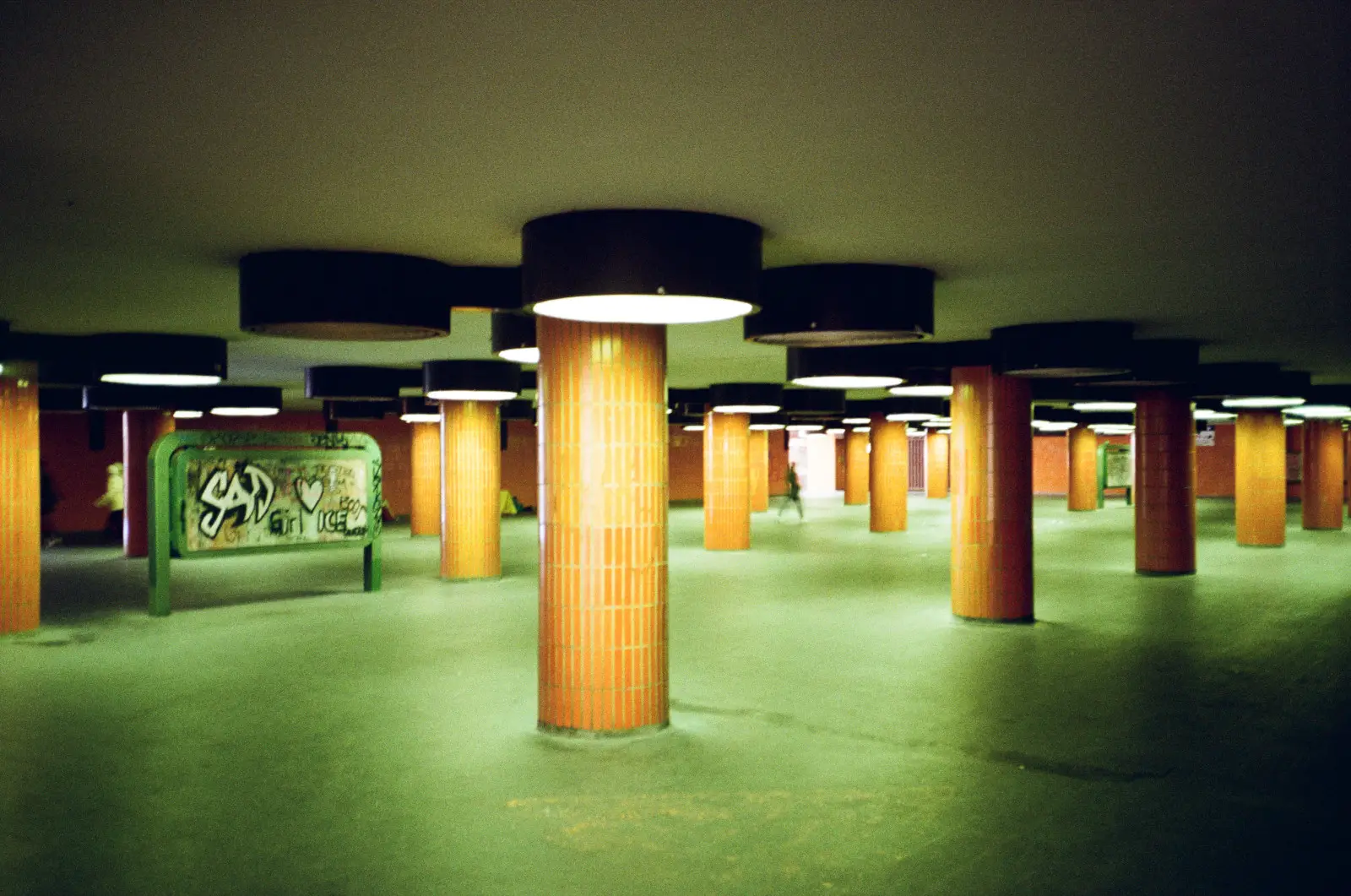
The Yashica produces better-exposed shots but two of the shots above turned out blurry. In low-light situations Yashica T4 will use shutter speeds so slow, you have no chances of getting a sharp shot unless you have hands of steel. Of course, if you are carrying a tripod with you, this is not a problem. However, carrying a tripod with a point-and-shoot is strange to me because it kills all the advantages of having a pocketable camera in the first place. With the Olympus you are limited to 1/45th of a second and the shots will always be sharp. Underexposure is the price you pay for sharpness. I prefer sharp underexposed shots to properly exposed blurry ones but different strokes for different folks as the saying goes. Hamish talks more about harnessing the Olympus and the low shutter speed limitation here.
All in all, I am pleasantly surprised by Olympus AF-10 Super and the quality of photos it produces. I would go even further and say that it is producing the results as good as Yashica T4. In my opinion, the only major letdown of Af-10 is that it is loud. Other limitations like shutter speeds diapason or film speeds range are not that critical for me.
You can find full-size versions of all scans above on Flickr: Olympus AF-10 super is here and Yashica T4 is here.
End note
So what is the conclusion? Do you actually need a Yashica T4? I will not give you an answer. I think everybody should decide it for themselves. Yashica T4 is a good camera. It is a cult point-and-shoot and some might even argue it is one of the symbols of the film photography revival. But if you didn’t know what T4 stands for, it is “Too pricey 4 what you are getting”.
Olympus AF-10 Super is just one of many available point-and-shoots which have very similar characteristics to Yashica T4. There are also Olympus mju series, Canon Prima Mini, Samsung AF-SLIM, Ricoh FF-9 and dozens of others. All of them are cheaper than the Yashica and I am pretty sure all of them are able to produce photos hardly distinguishable from these of Yashica T4. But then again, they are not Yashica T4.
–
If you want to see some of my photos which are – I hope – a little bit better than test shots presented here, you can find me on IG @dmz_photo. Be aware, though, that I am mixing film with digital there so in no case should you visit it if you’re sensitive to this kind of impurity 🙂
Share this post:
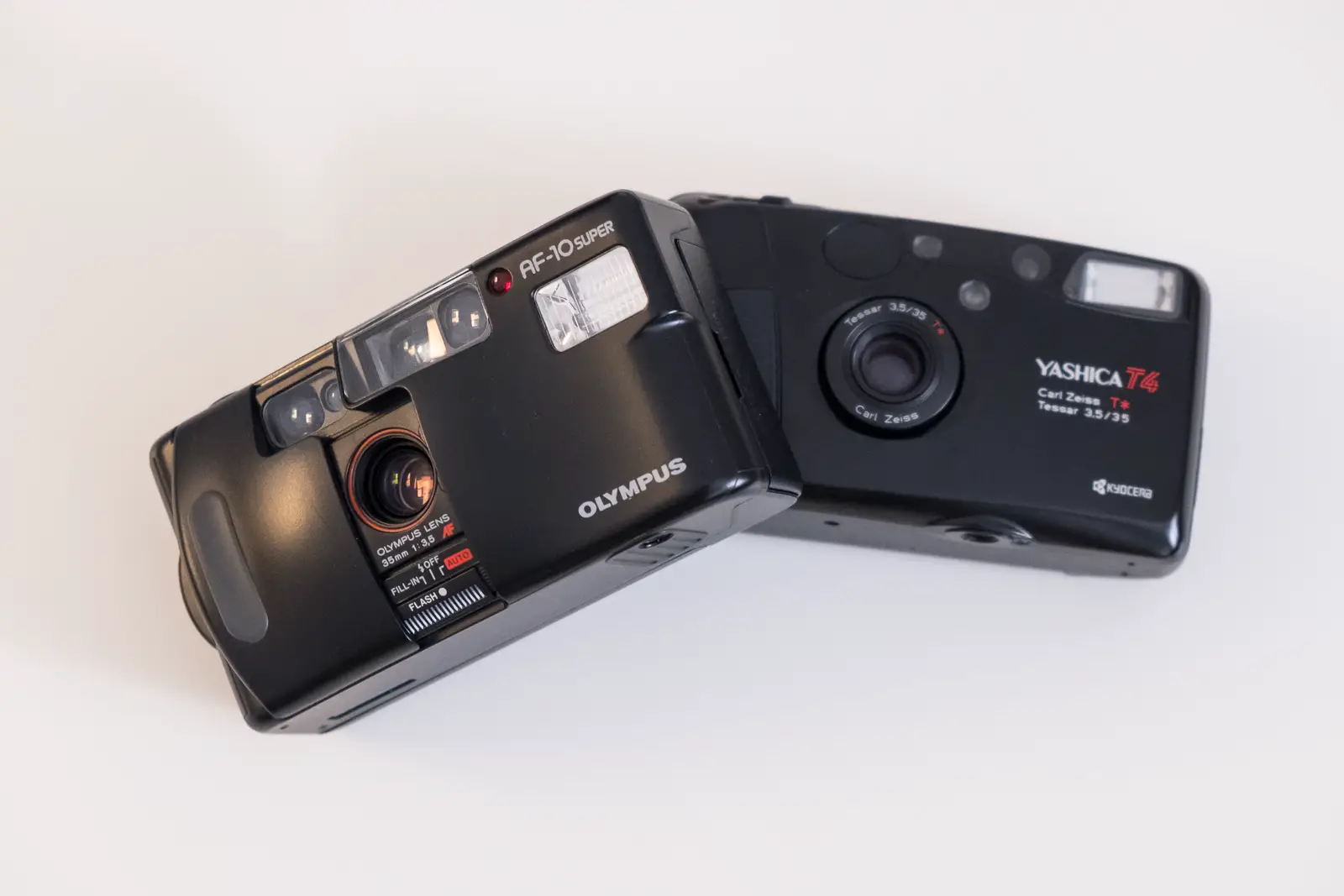








Comments
Mike Hannon on Yashica T4 Review: A ‘Cult vs. Budget’ Comparison – By Dmitry Zhilyaev
Comment posted: 30/08/2019
From my tests Colorplus at 1 still has plenty highlight headroom. So I would expect the slightly overexposed shots to actually have more contrast than box speed due to an extra stop of shadow detail. So if the scan settings were identical, the Oly might simply be less contrasty.
Comment posted: 30/08/2019
Łukasz on Yashica T4 Review: A ‘Cult vs. Budget’ Comparison – By Dmitry Zhilyaev
Comment posted: 30/08/2019
Comment posted: 30/08/2019
Terry B on Yashica T4 Review: A ‘Cult vs. Budget’ Comparison – By Dmitry Zhilyaev
Comment posted: 30/08/2019
I view web reviews in chrome and use the distill page mode which removes annoying adverts and re-formats the text. I mention this because your images, the originals, are now shown in there entirety, one below the other, and don't use the slider comparison tool. Scrolling down through these I did form the opinion that I always preferred the lower one of each scene. These all seem to have a slightly lower gamma (more black content) and as I like to use the black level slide control in PP, these images appealed to me more. This, for me, was the clue that they were likely to be from the T4 lens having a tad more contrast, and the more obvious flare in the contre jour shot sealed it for me. But as regards overall sharpness there was so little obvious difference between the two for web use. But I've always believed that to accurately assess a lens' performance for ultimate sharpness with film, this can only be done using either a proper photographic print (to eliminate any losses due to digital scanning) or a photographic focus finder.
Anyway, away from the technical bits, a very nice portfolio you've submitted here.
Comment posted: 30/08/2019
Martin South of France on Yashica T4 Review: A ‘Cult vs. Budget’ Comparison – By Dmitry Zhilyaev
Comment posted: 30/08/2019
Comment posted: 30/08/2019
Kurt Ingham on Yashica T4 Review: A ‘Cult vs. Budget’ Comparison – By Dmitry Zhilyaev
Comment posted: 30/08/2019
Comment posted: 30/08/2019
Dan Castelli on Yashica T4 Review: A ‘Cult vs. Budget’ Comparison – By Dmitry Zhilyaev
Comment posted: 30/08/2019
My personal cult camera is my Leitz-Minolta CL w/a 40mm lens. It's a conversation starter...More so than my M4-P. Go figure...
A nice, in-depth article. I enjoyed it.
Comment posted: 30/08/2019
Andrew Roberts on Yashica T4 Review: A ‘Cult vs. Budget’ Comparison – By Dmitry Zhilyaev
Comment posted: 30/08/2019
I agree with what you say about the sound of the Olympus shutter, it sounds classy which is strange when its in such a plastic-y cheap body but there you go :D
So I suppose the real question is, is the Yashica overpriced or the Olympus underpriced? :D
Comment posted: 30/08/2019
JamesW on Yashica T4 Review: A ‘Cult vs. Budget’ Comparison – By Dmitry Zhilyaev
Comment posted: 30/08/2019
Comment posted: 30/08/2019
Lili on Yashica T4 Review: A ‘Cult vs. Budget’ Comparison – By Dmitry Zhilyaev
Comment posted: 31/08/2019
Well done!
What matters most is the user, not the gear.
Bravo!!!
Comment posted: 31/08/2019
Comment posted: 31/08/2019
Helge Frisenette on Yashica T4 Review: A ‘Cult vs. Budget’ Comparison – By Dmitry Zhilyaev
Comment posted: 01/09/2019
Such small images are really useless for judging anything for reader.
The name of the game is resolution.
Colourcast can be due any number of differences. And can be tweaked very easily in post.
Therefor we really need very high resolution scans to simulate a large print where the difference in lens resolution would be apparent.
Comment posted: 01/09/2019
Rob B on Yashica T4 Review: A ‘Cult vs. Budget’ Comparison – By Dmitry Zhilyaev
Comment posted: 01/09/2019
I shot two rolls of film through it and your reaction mirrors perfectly how I felt about it. I just couldn’t see what the hype was about. To be real, I have always preferred the SLR, but I find a point-and-shoot handy when I’m on the go. I sold the T4.
I have an Infinity Jr. that I haven’t yet shot, so your comparison is encouraging me to get it out shooting.
I also have a Pentax PC35AF and a Mju I that, IMO take better pictures and miss focus less frequently than the T4.
Comment posted: 01/09/2019
Comment posted: 01/09/2019
Comment posted: 01/09/2019
Comment posted: 01/09/2019
Comment posted: 01/09/2019
Rob B on Yashica T4 Review: A ‘Cult vs. Budget’ Comparison – By Dmitry Zhilyaev
Comment posted: 04/09/2019
Between the PC35AF-M and the Mju I, I personally give the edge to the Pentax for its faster lens, 1.5 stop backlight compensation and the fact that fits better in my large hands. This along with my Nikon L35AF2 (One Touch) are my preferred travel compacts.
The Mju I wins on size and weight and is the more discreet street shooter, however. I like being able to slip it into a coat pocket.
My ultimate go-to street shooter combo is my Contax 139Q or Yashica FX-D with the CZ Tessar 45mm f2.8.
Rob B on Yashica T4 Review: A ‘Cult vs. Budget’ Comparison – By Dmitry Zhilyaev
Comment posted: 04/09/2019
Bryan D. Costin on Yashica T4 Review: A ‘Cult vs. Budget’ Comparison – By Dmitry Zhilyaev
Comment posted: 04/09/2019
Kirill S on Yashica T4 Review: A ‘Cult vs. Budget’ Comparison – By Dmitry Zhilyaev
Comment posted: 07/09/2019
Comment posted: 07/09/2019
Comment posted: 07/09/2019
Chad on Yashica T4 Review: A ‘Cult vs. Budget’ Comparison – By Dmitry Zhilyaev
Comment posted: 28/05/2020
Matthew Ingram on Yashica T4 Review: A ‘Cult vs. Budget’ Comparison – By Dmitry Zhilyaev
Comment posted: 16/06/2020
Dimitrios Kosmidis on Yashica T4 Review: A ‘Cult vs. Budget’ Comparison – By Dmitry Zhilyaev
Comment posted: 31/01/2021
It an interesting topic. Hype is always overpriced. But people love buying things for non practical reasons. Для успокоения души...
So here I am, unemployed, in a country with quarantine and with much equipment missing for my job (photography), but still "wasting" my time on searching a "good" but cheap p&s film camera. I just can’t help it.
Dmitry Zhilyaev on Yashica T4 Review: A ‘Cult vs. Budget’ Comparison – By Dmitry Zhilyaev
Comment posted: 16/02/2021
Stijn on Yashica T4 Review: A ‘Cult vs. Budget’ Comparison – By Dmitry Zhilyaev
Comment posted: 03/02/2022
You wrote about the DX reading and how you used 200 stock which, because the camera reads it as 100, is overexposed by one stop. You talked about how you could’ve done the comparison better in that regard. I was wondering how would you have done so? Would you do so by using a ISO 100 stock, by pushing or pulling in the development process or something I don’t know? I really like certain 200 ISO stocks so I would love be able to use them in this camera, but I really want to know if it’s possible to avoid the flatter look due to overexposing that you talked about. Thanks!
Barabas on Yashica T4 Review: A ‘Cult vs. Budget’ Comparison – By Dmitry Zhilyaev
Comment posted: 05/03/2022
These plastic camera's will last maybe a few more years but those plastics are getting old and brittle, battery compartment doors are breaking off, gears crack, windows falling out... that's why my latest 'point&shoot' is again a 50's camera. It is super quiet. It has no shutterlag. It has no auto focus, doesn't even have a rangefinder. But don't underestimate the effect on image quality of using 10 aperture blades, and all photo's are always perfectly sharp on the distance that I guessed beforehand :) It's a (pocketable!) Voigtlander Vito II with 50mm f3.5 Color-Skopar lens.